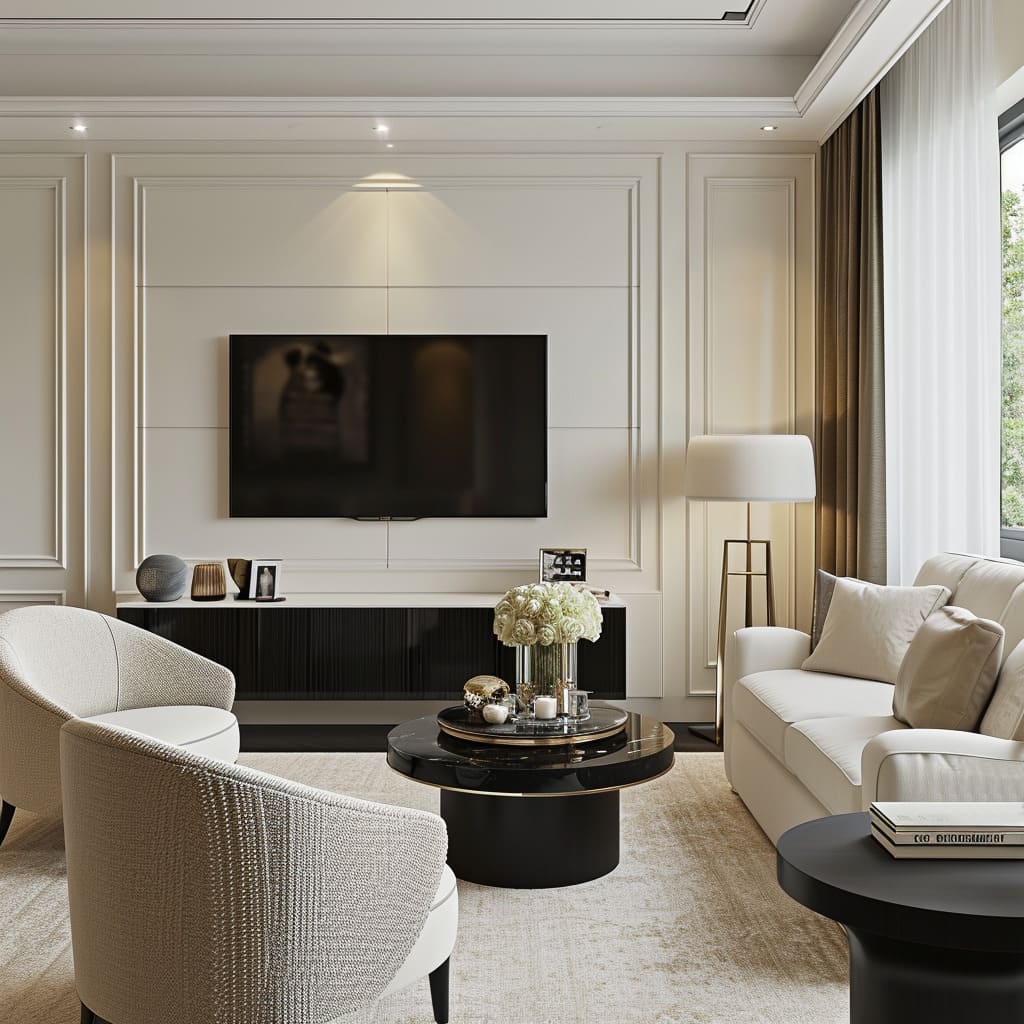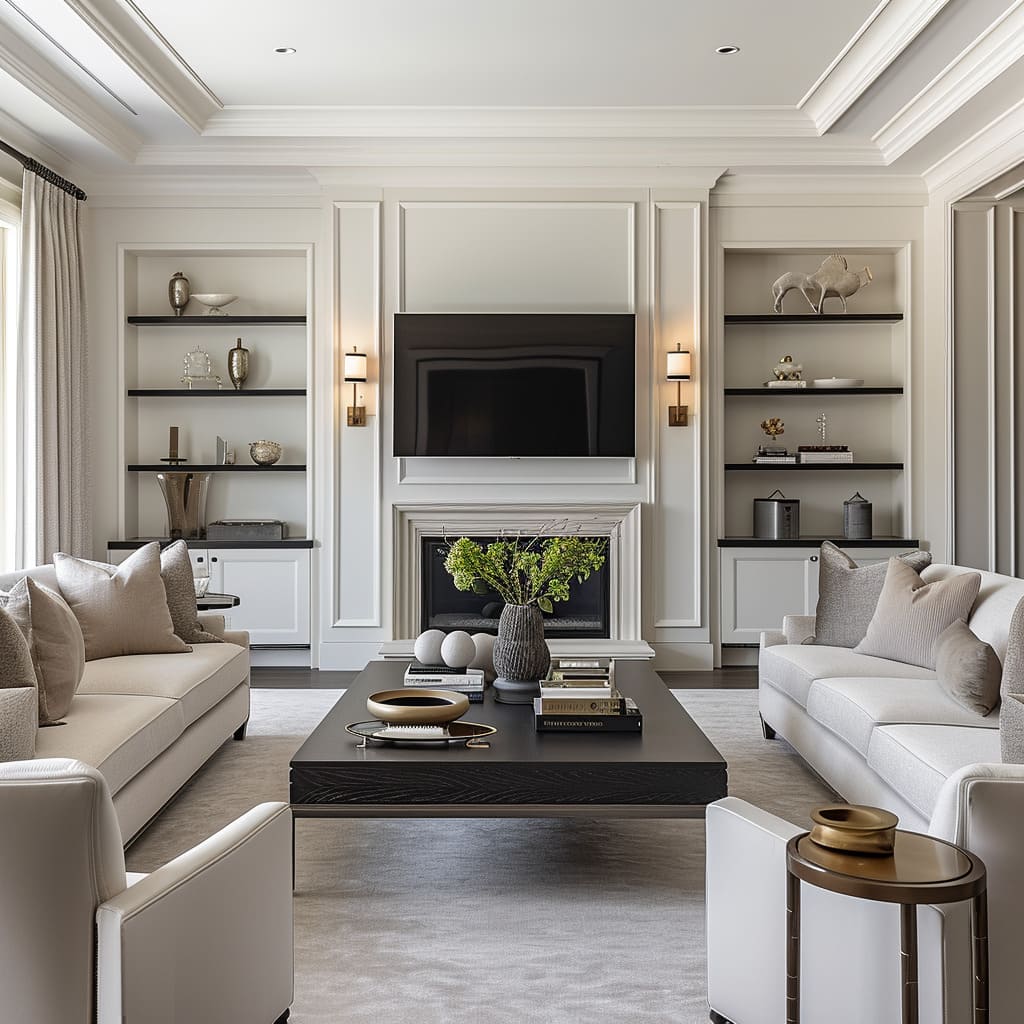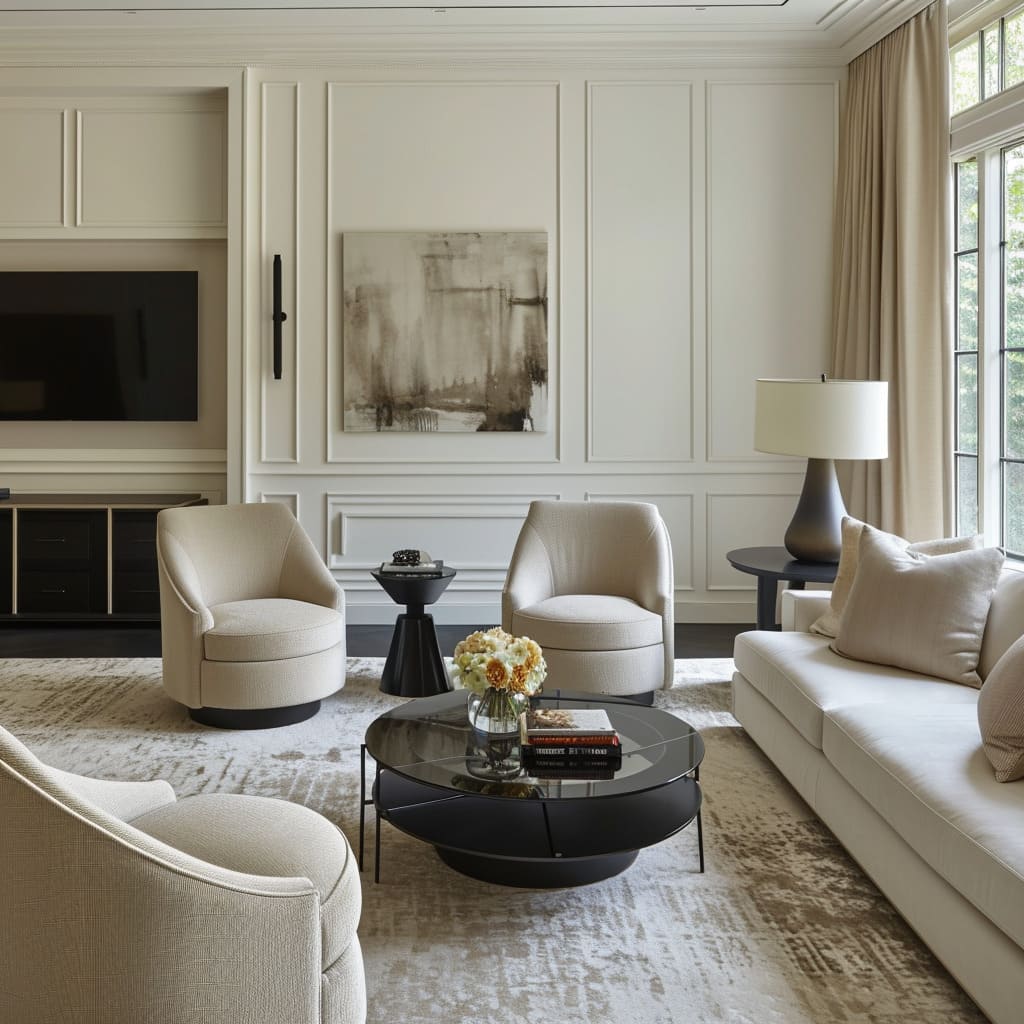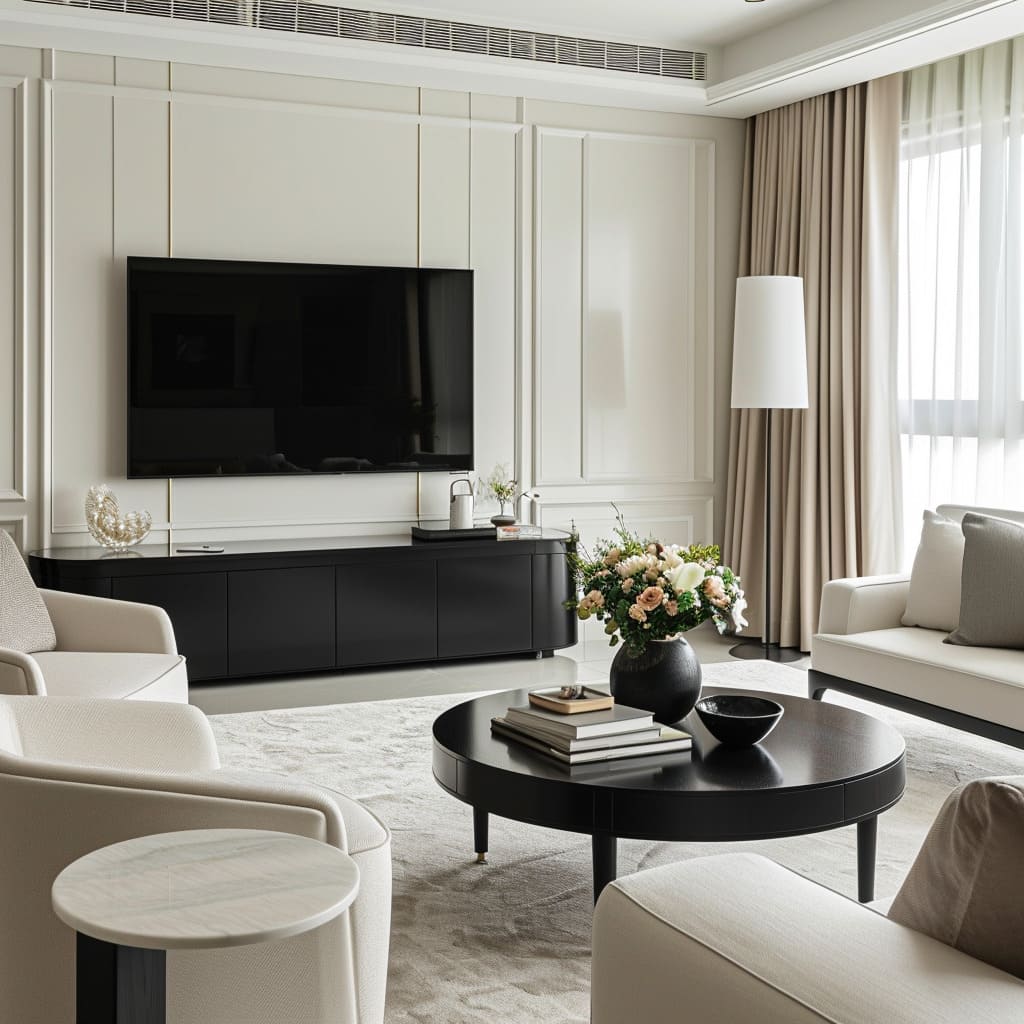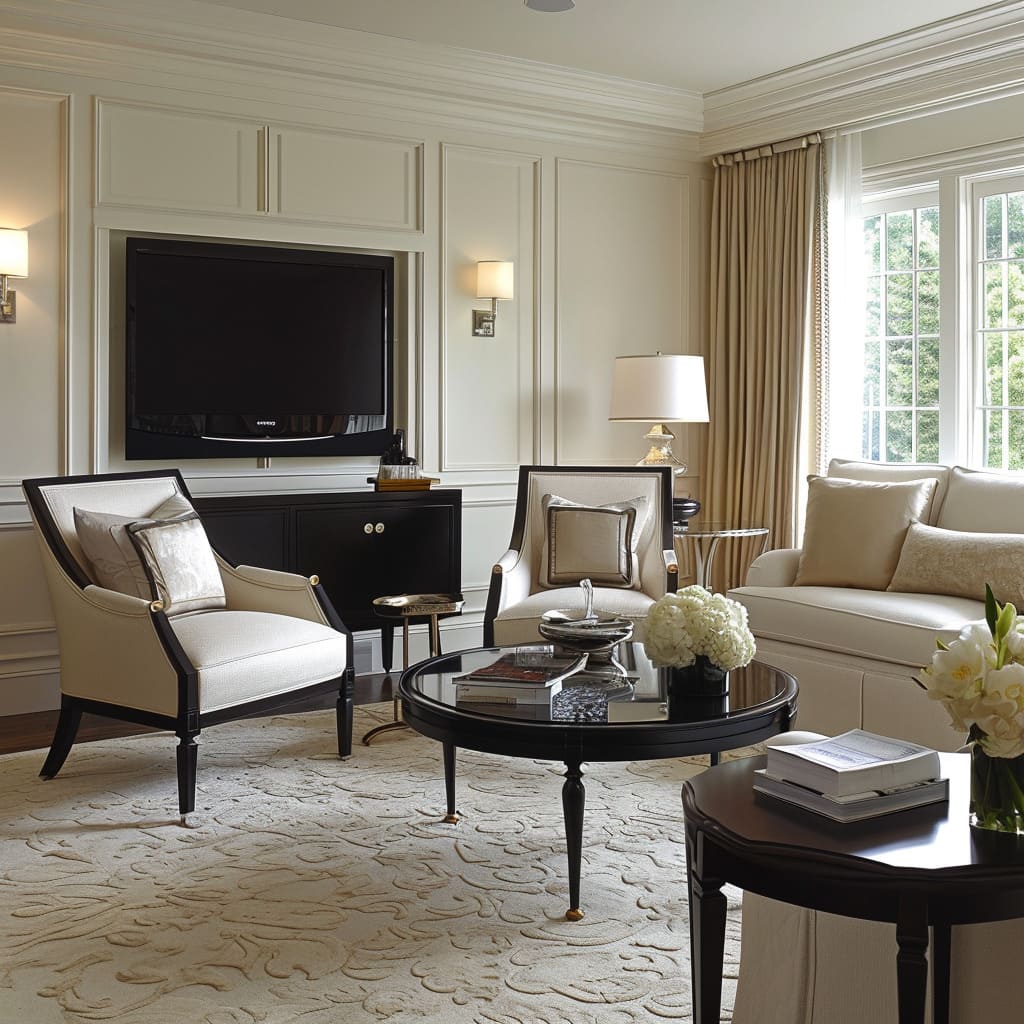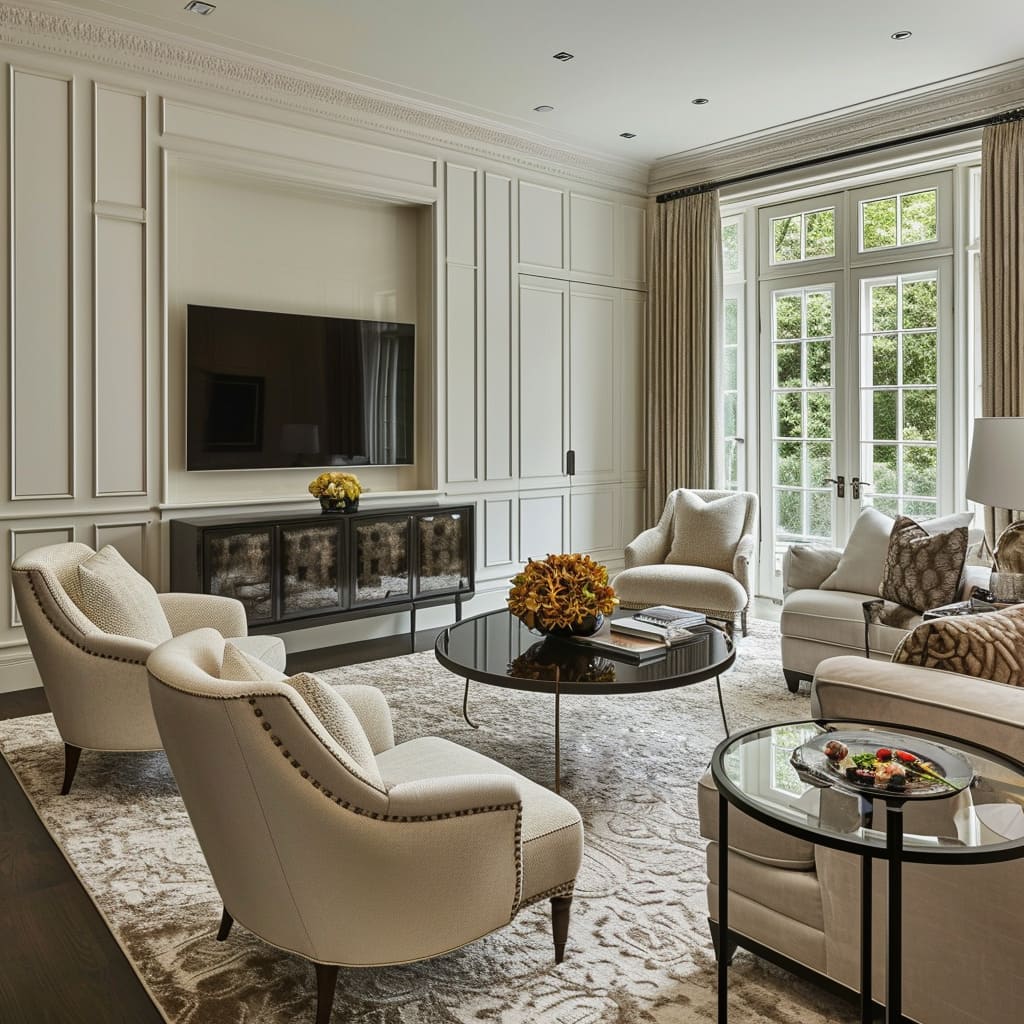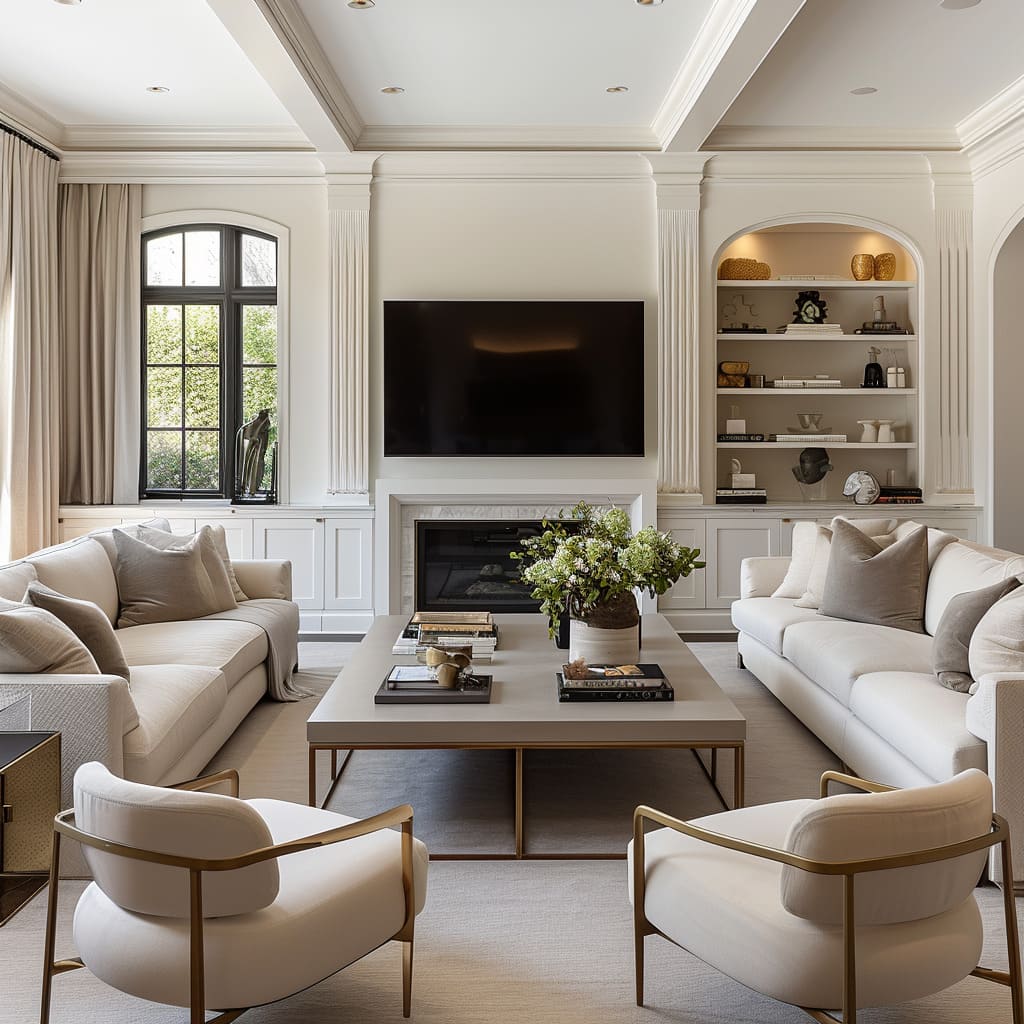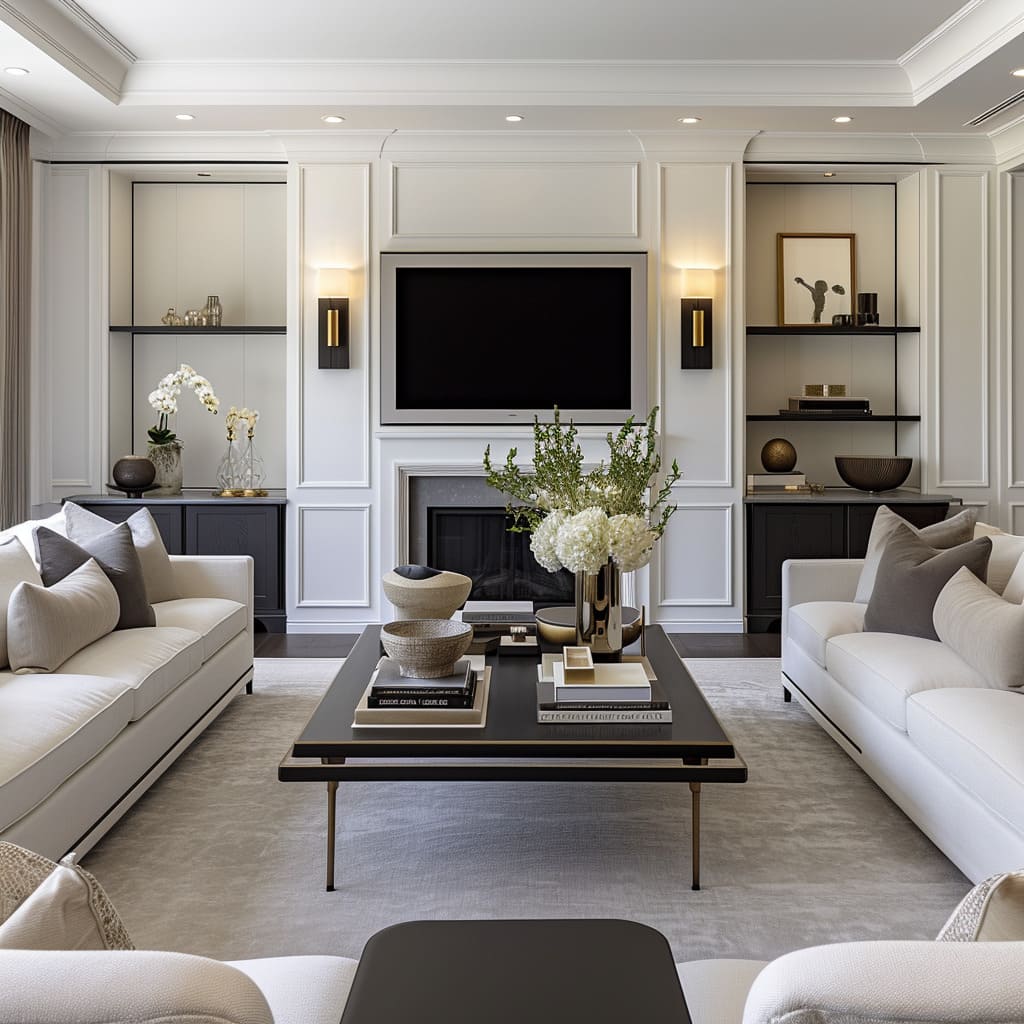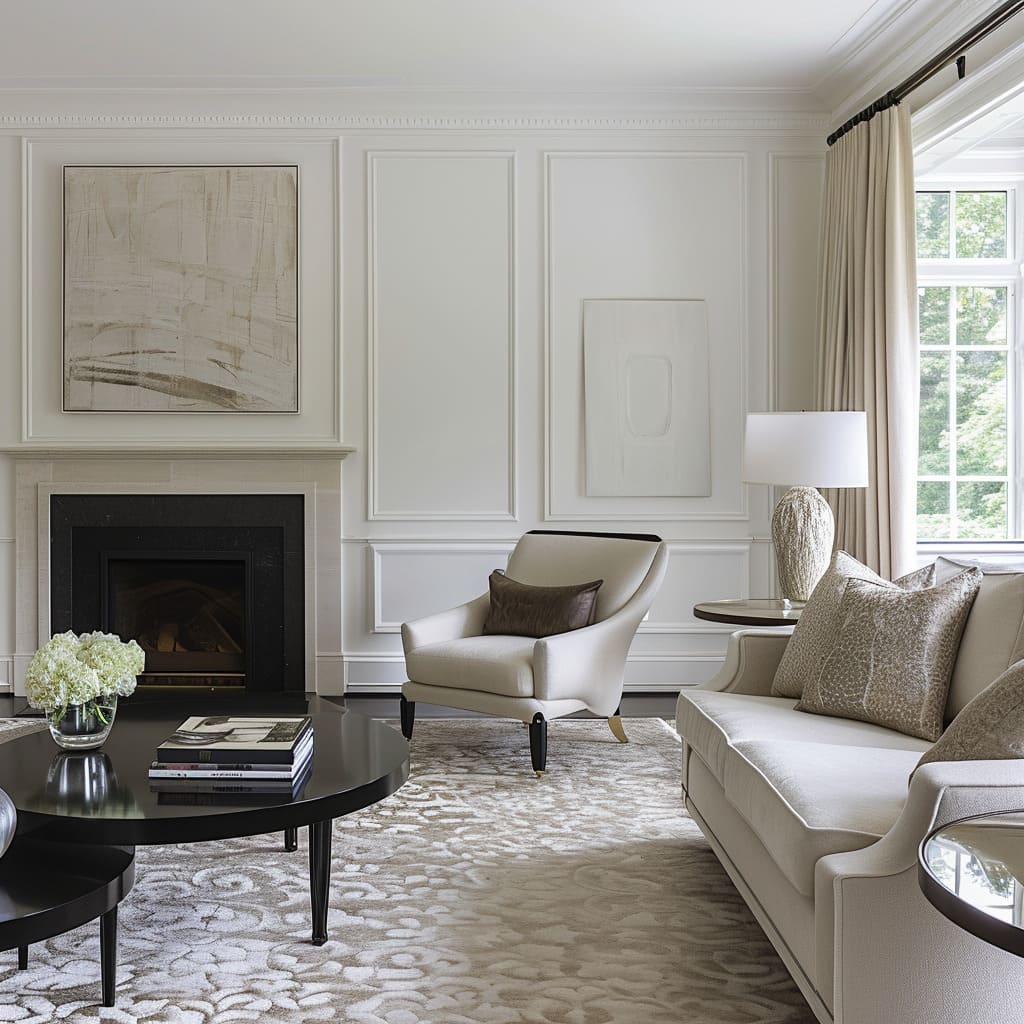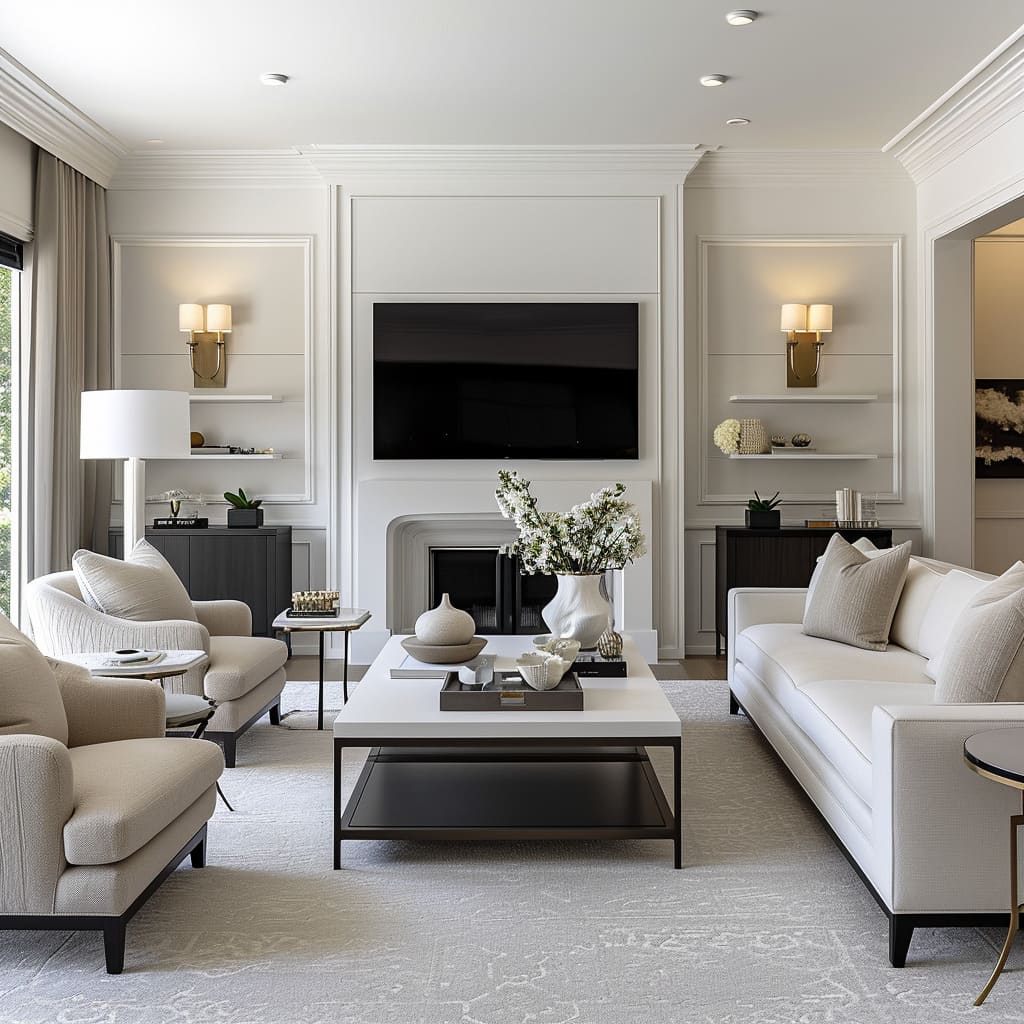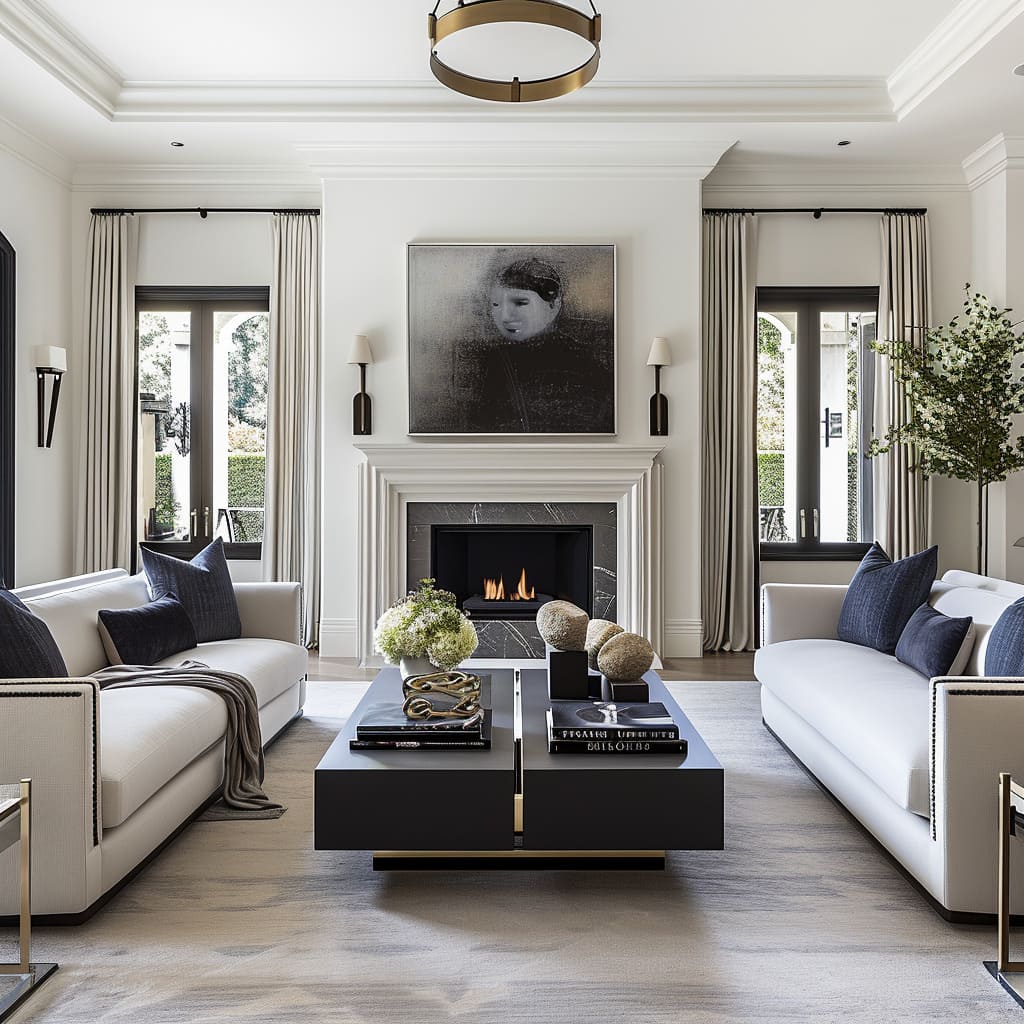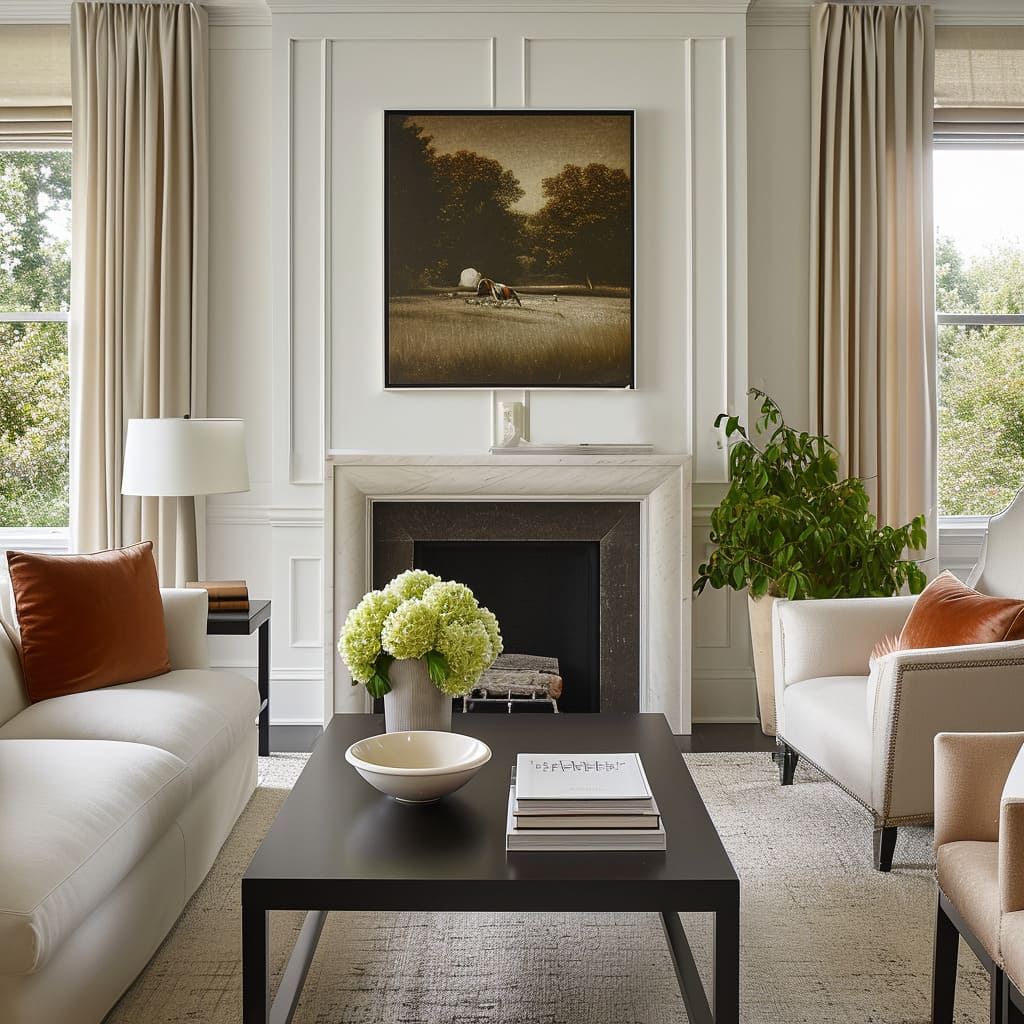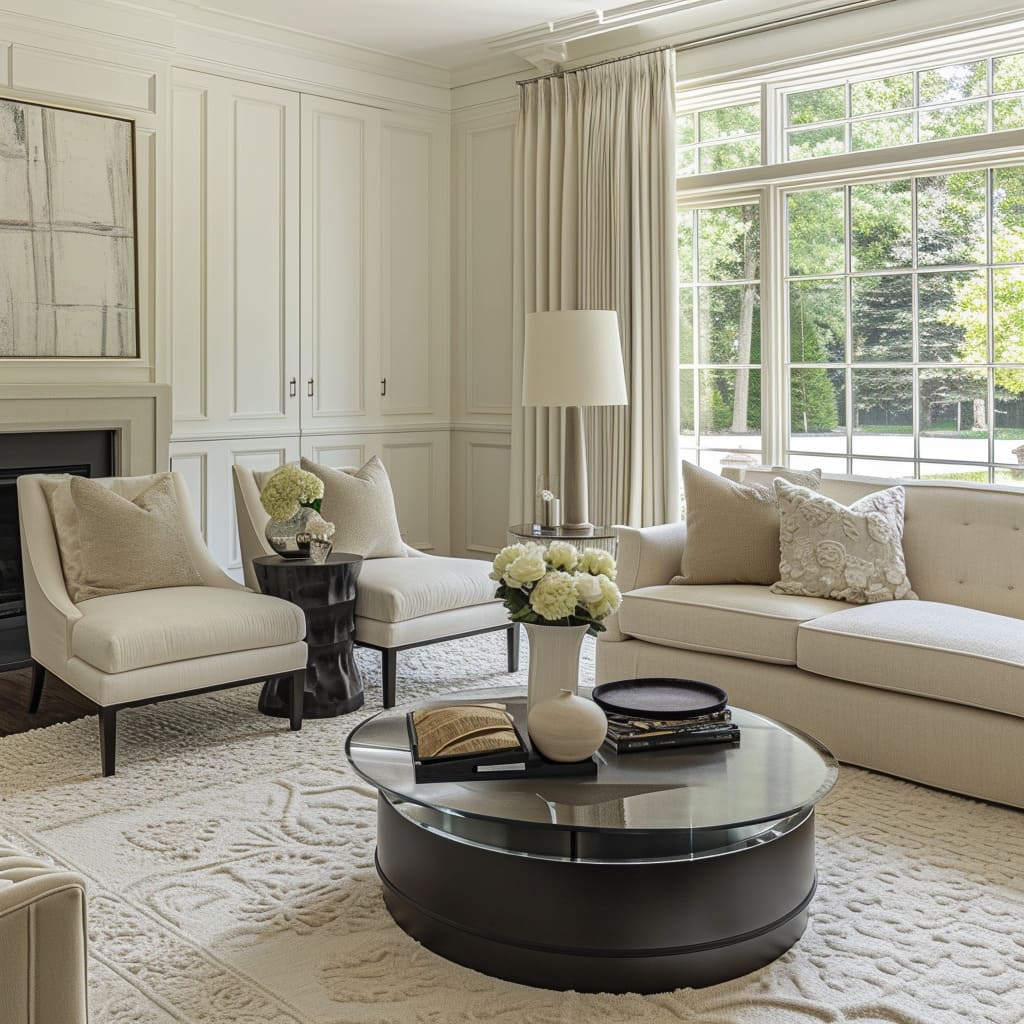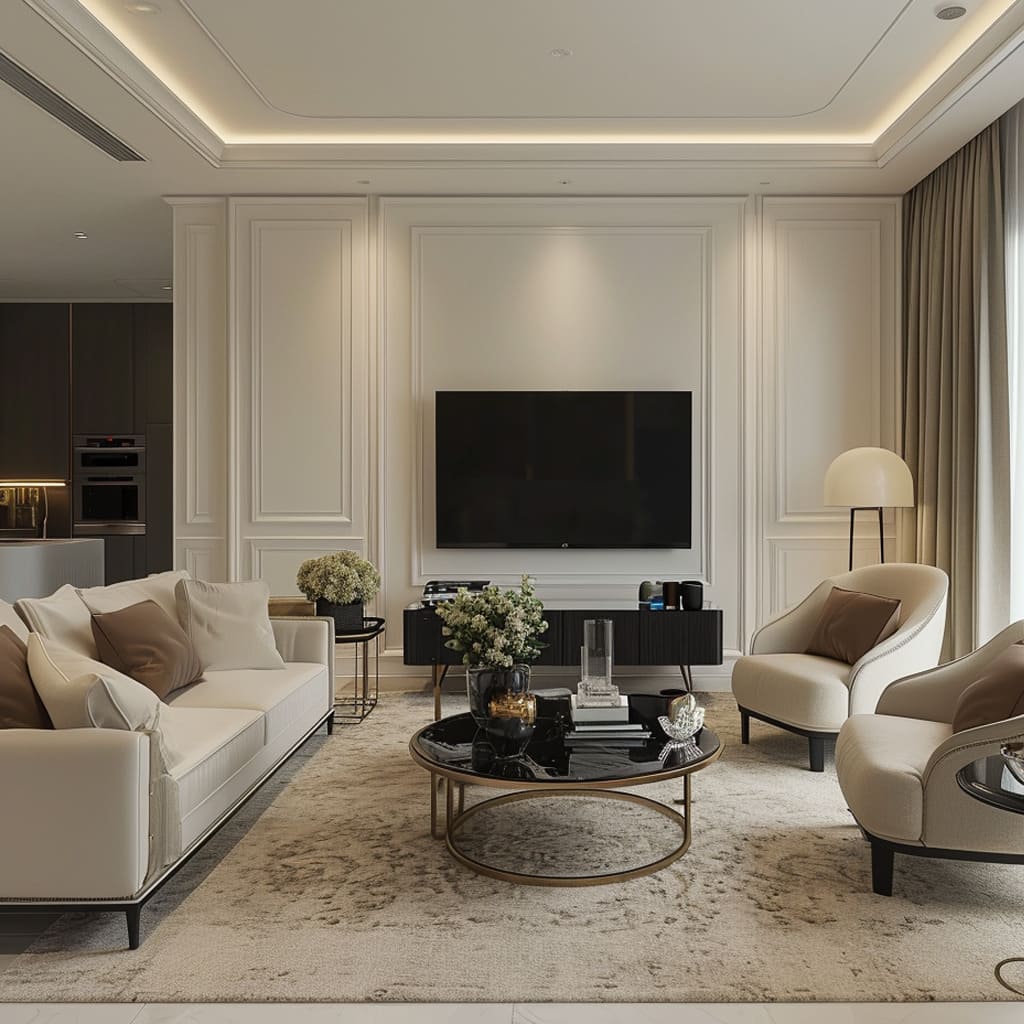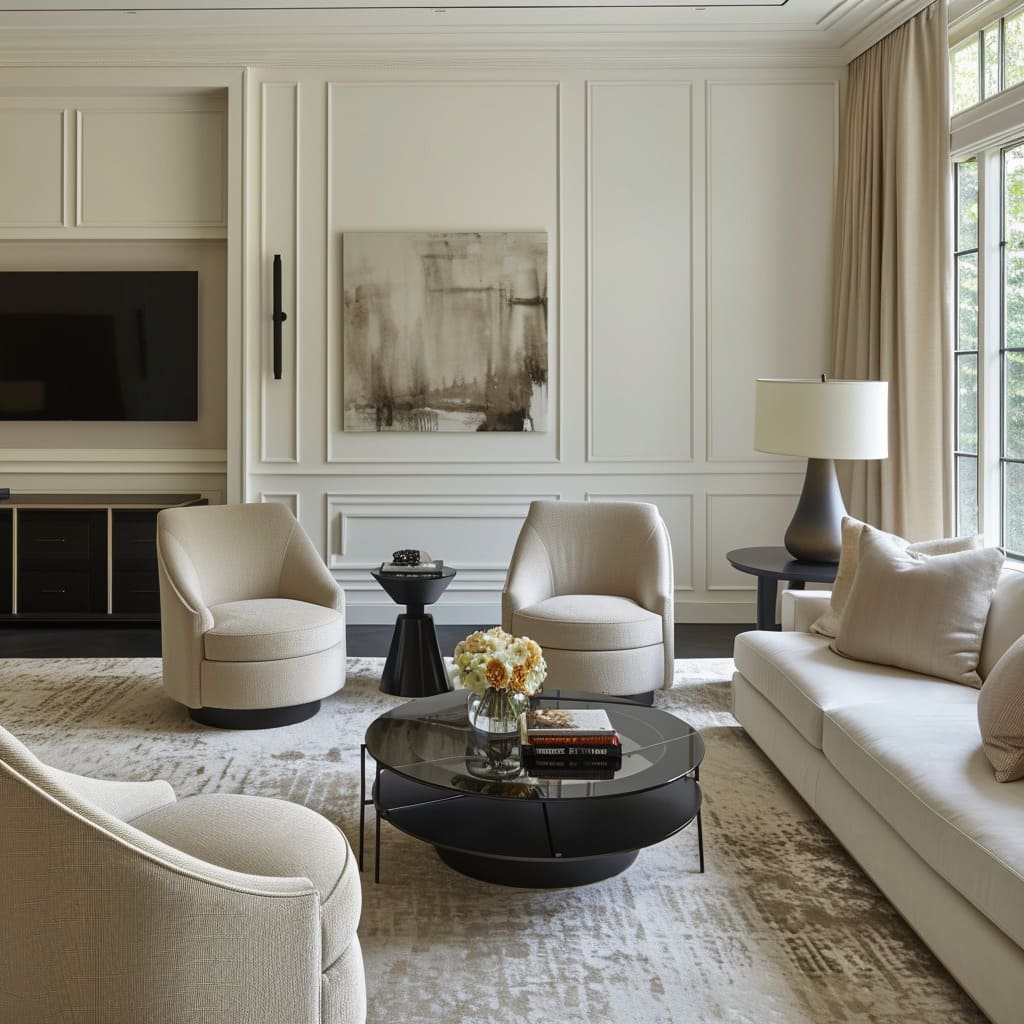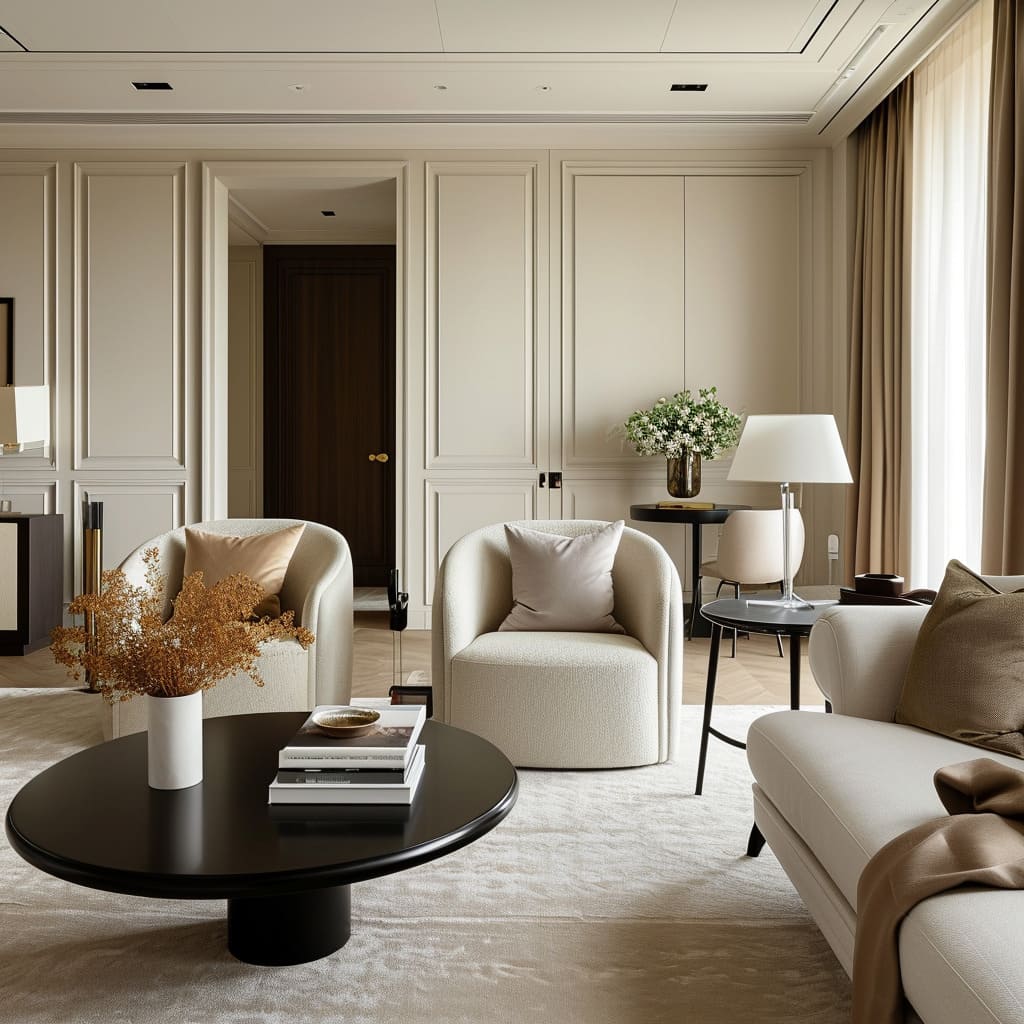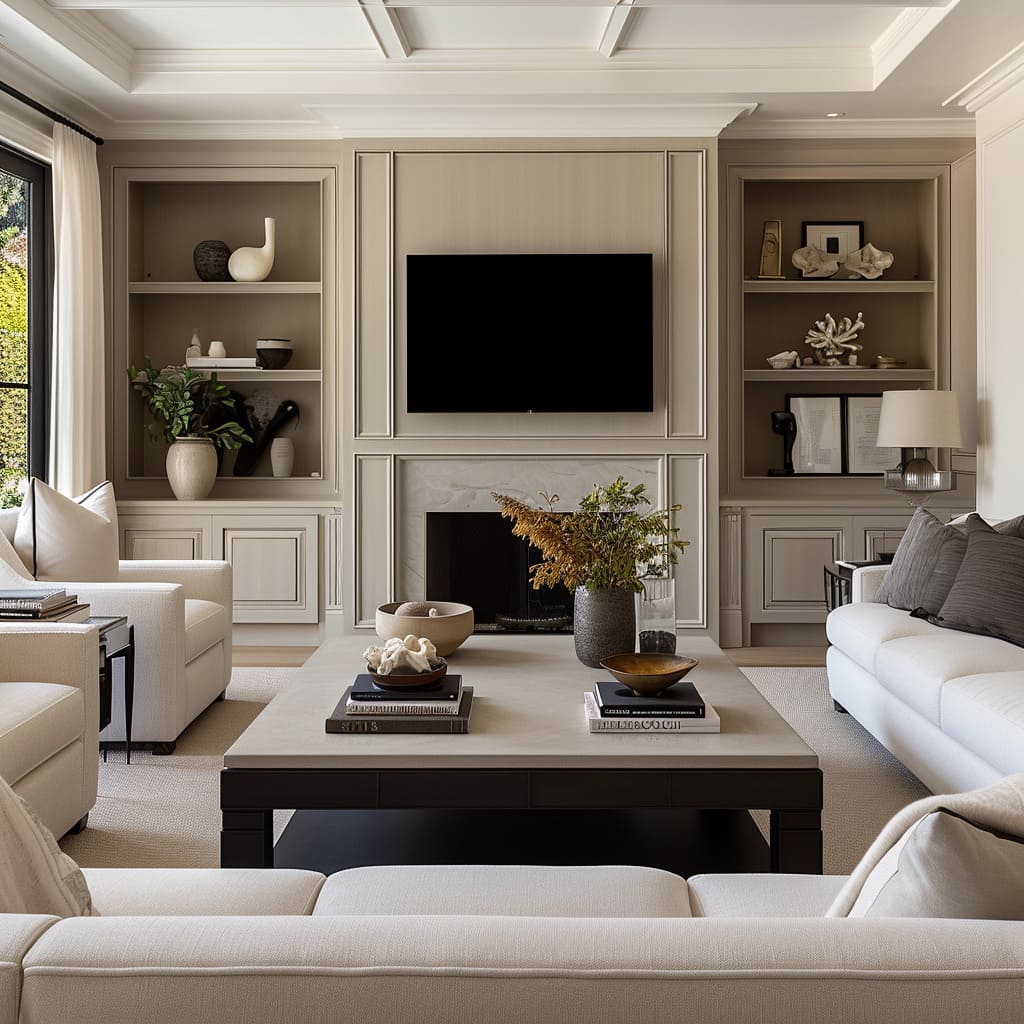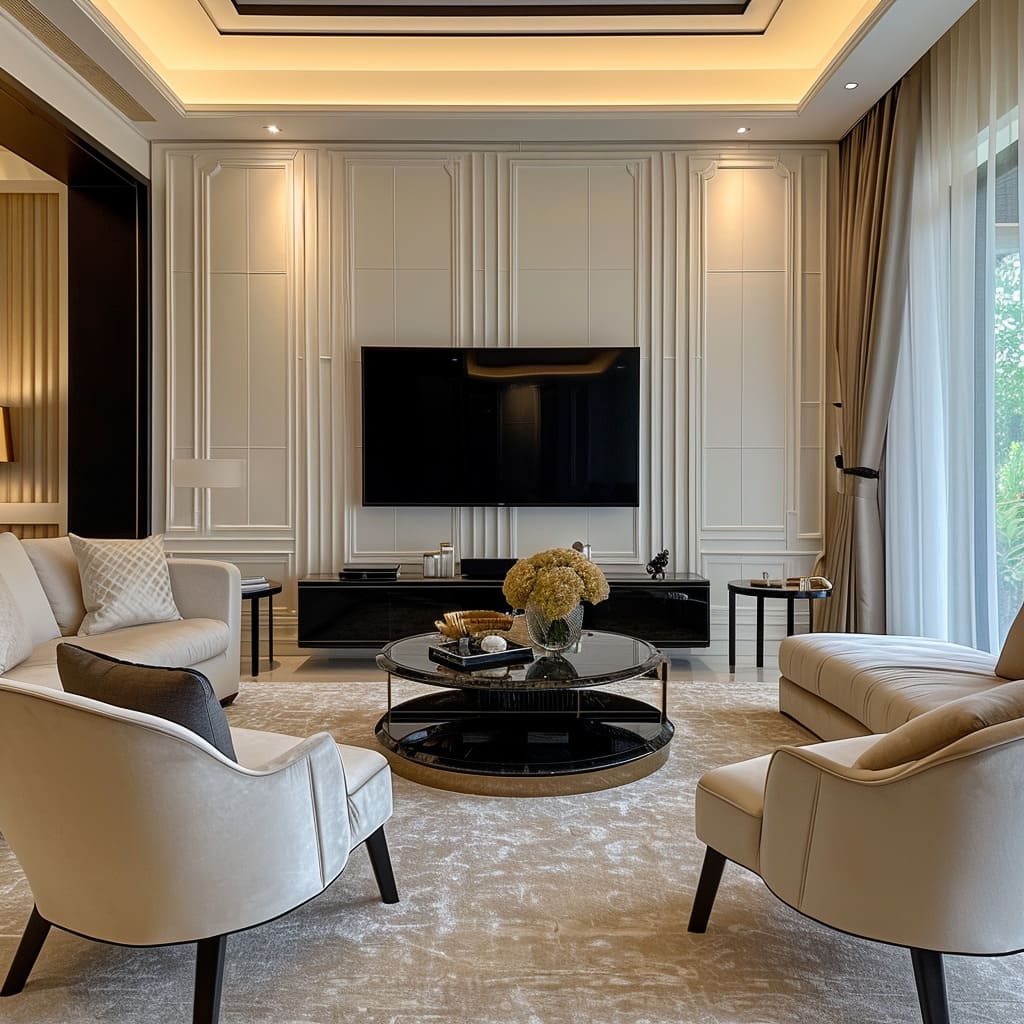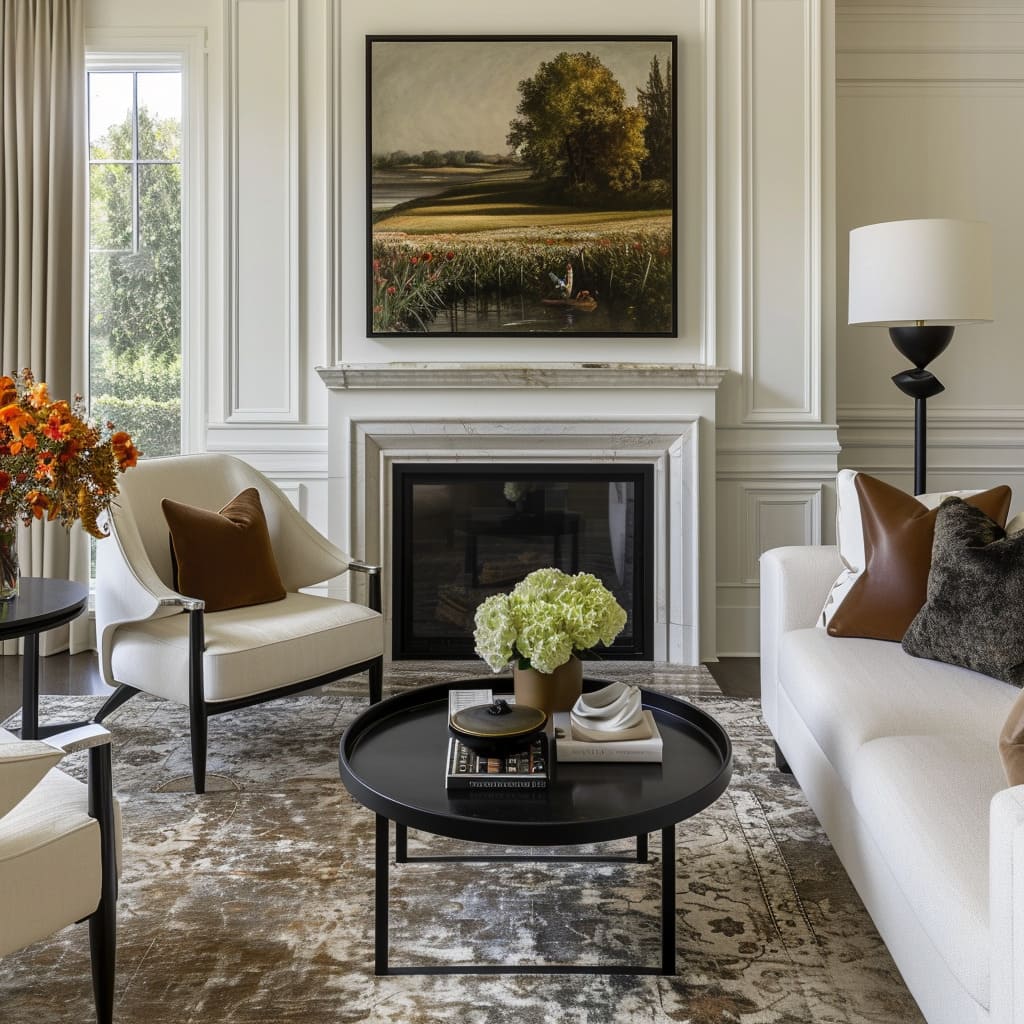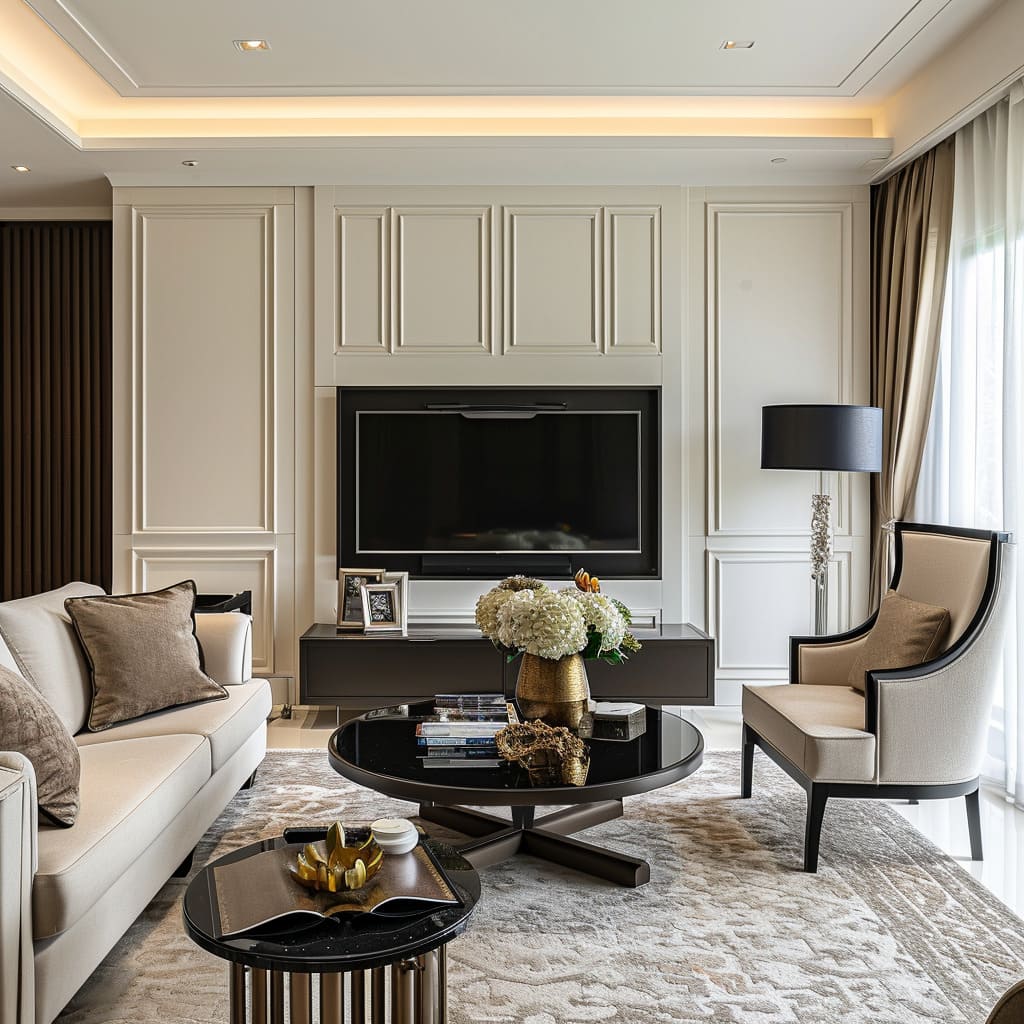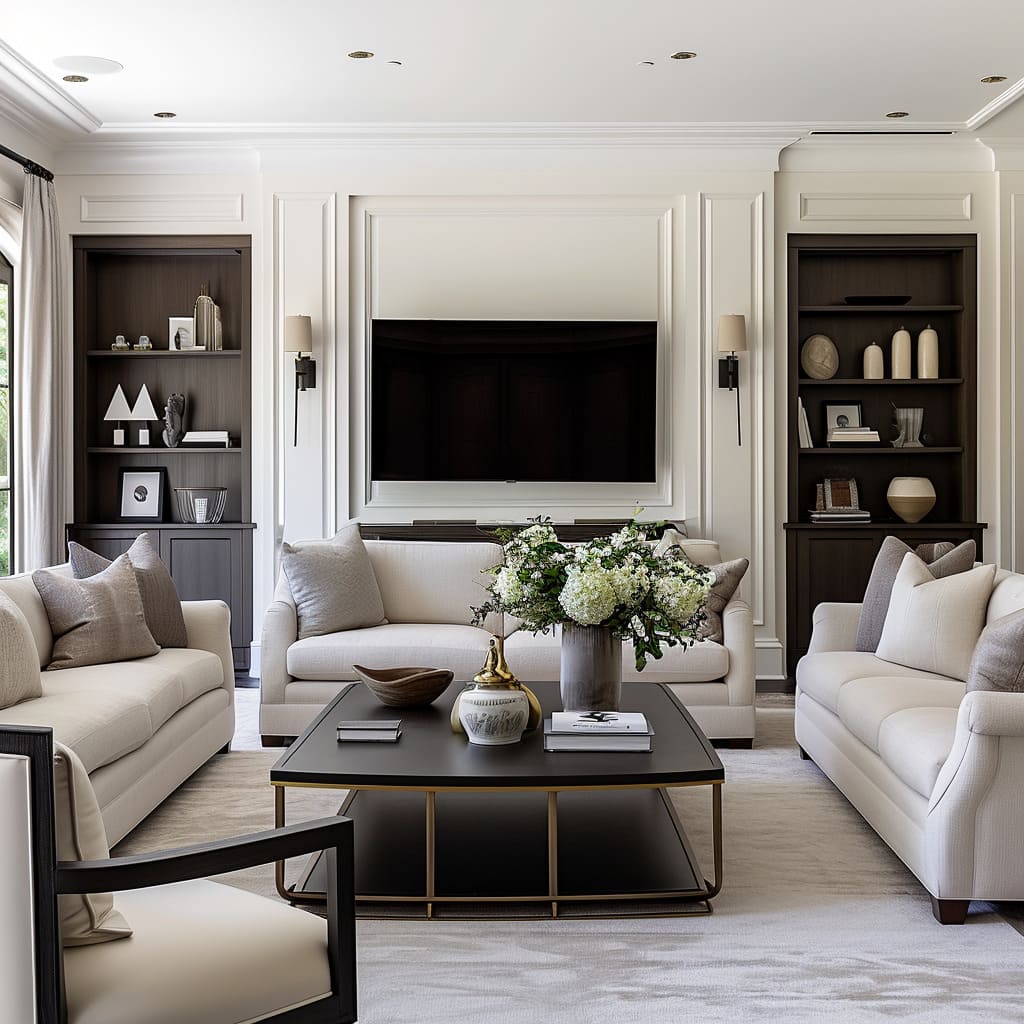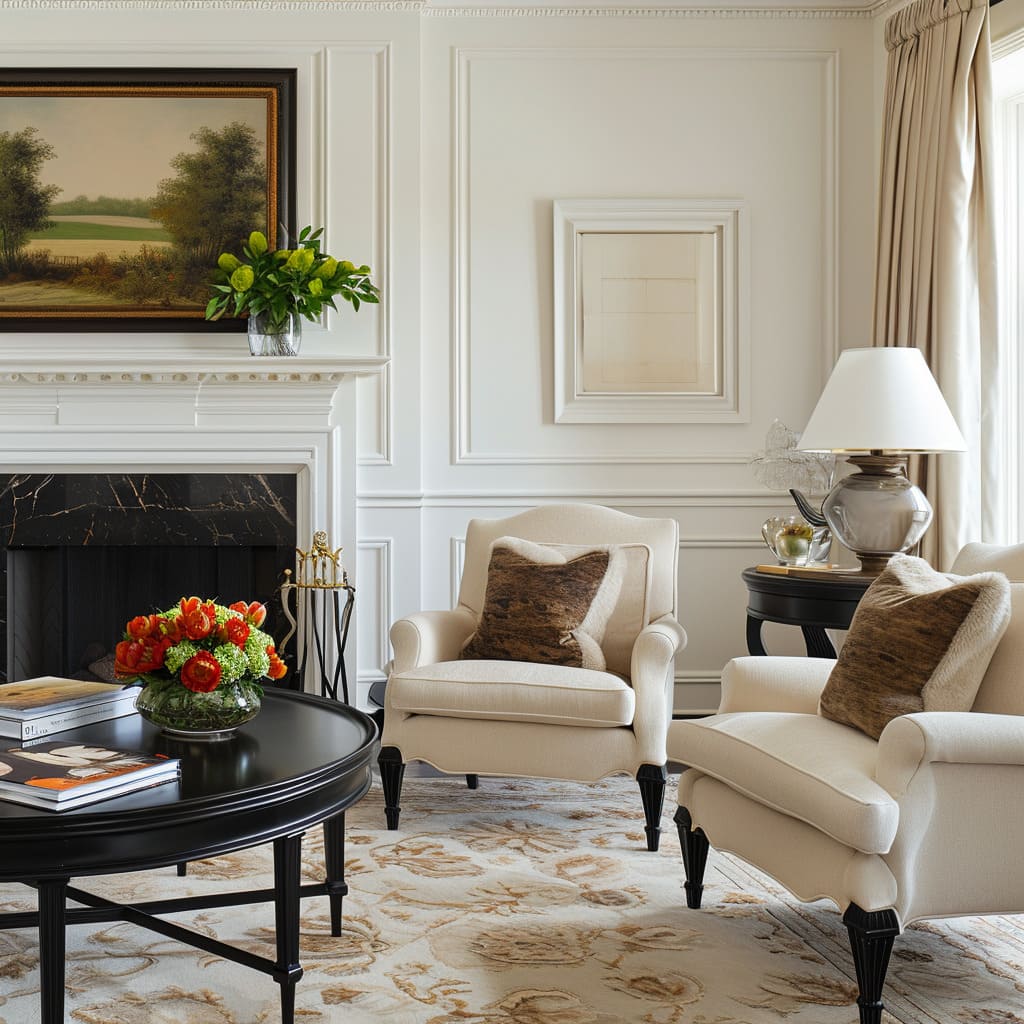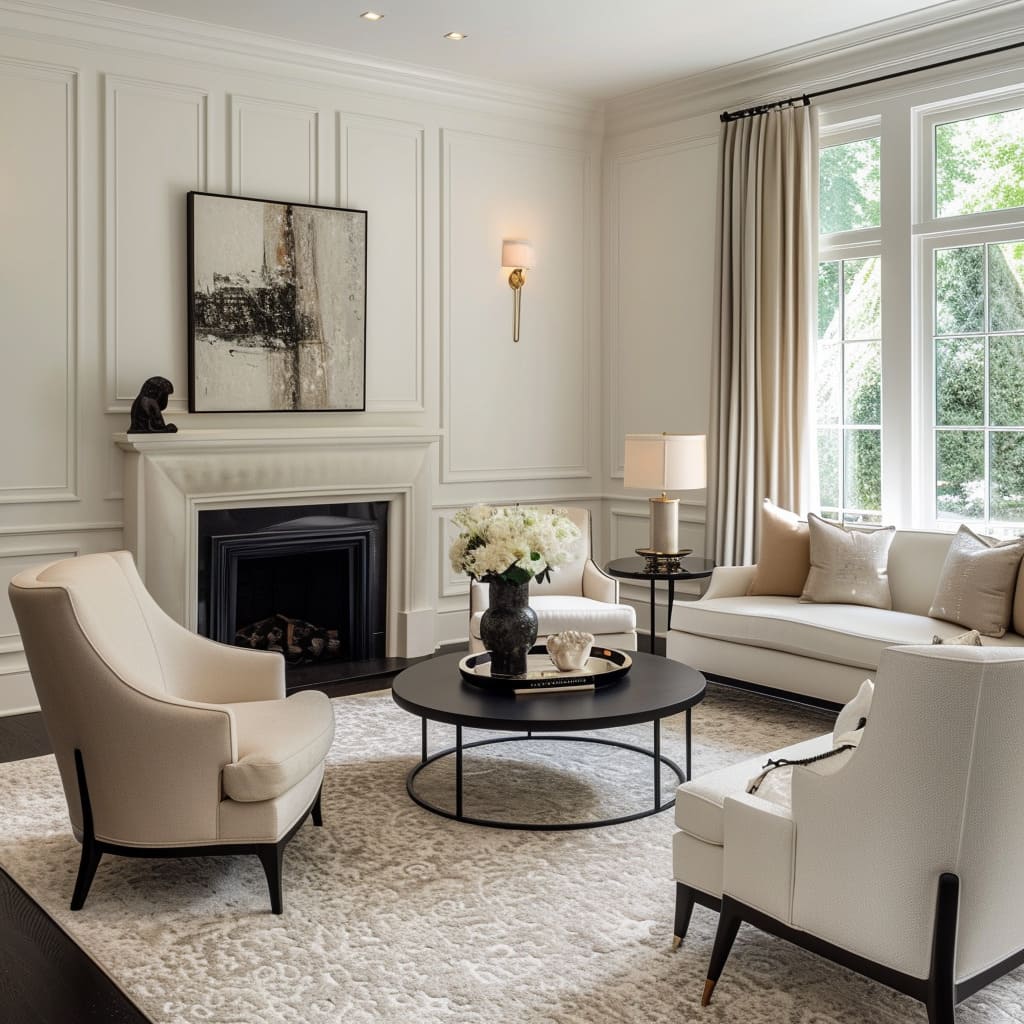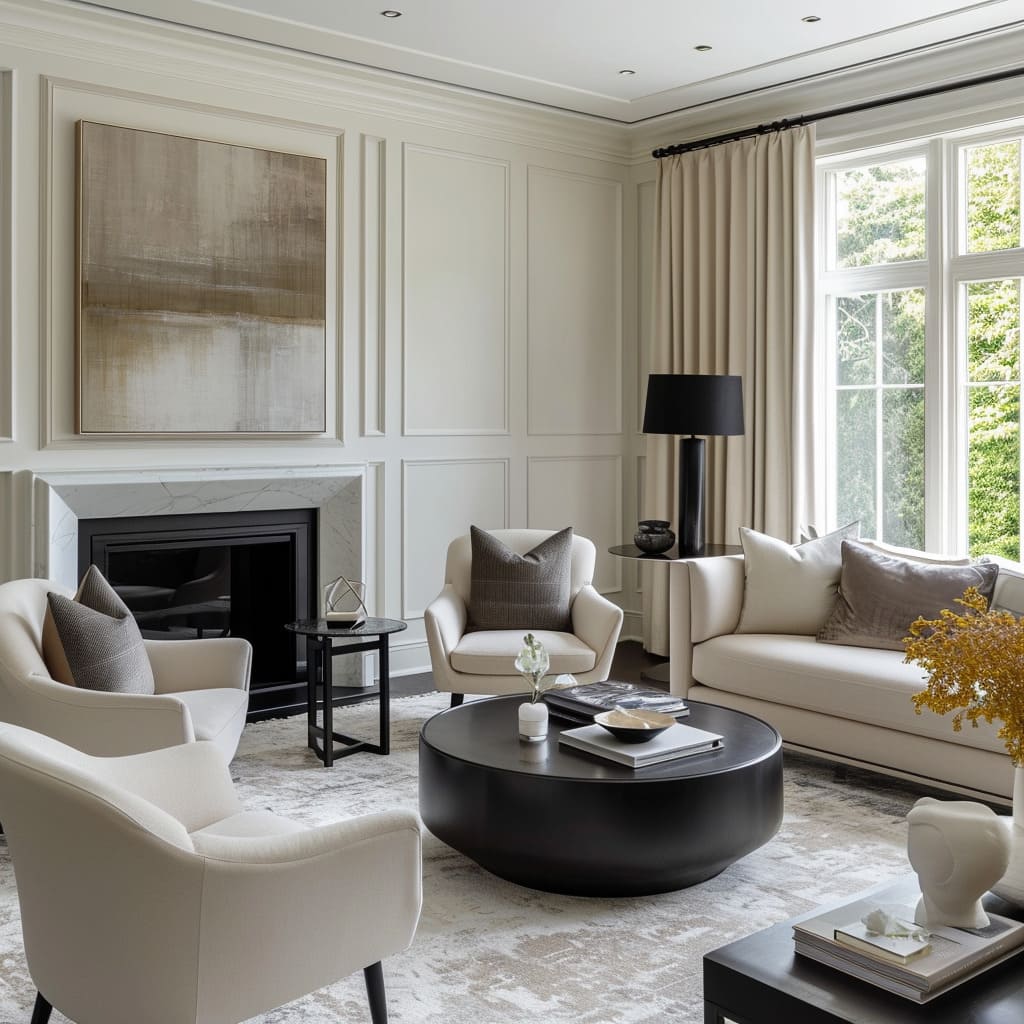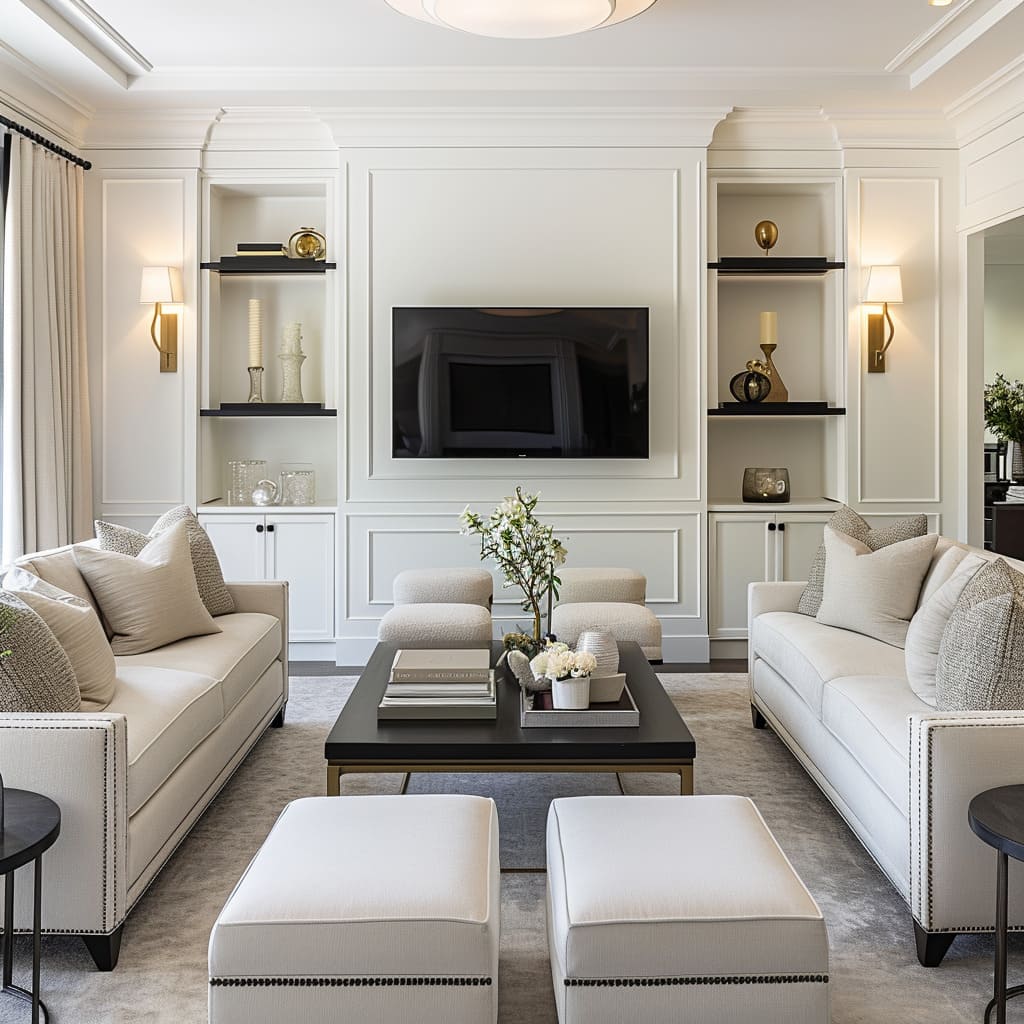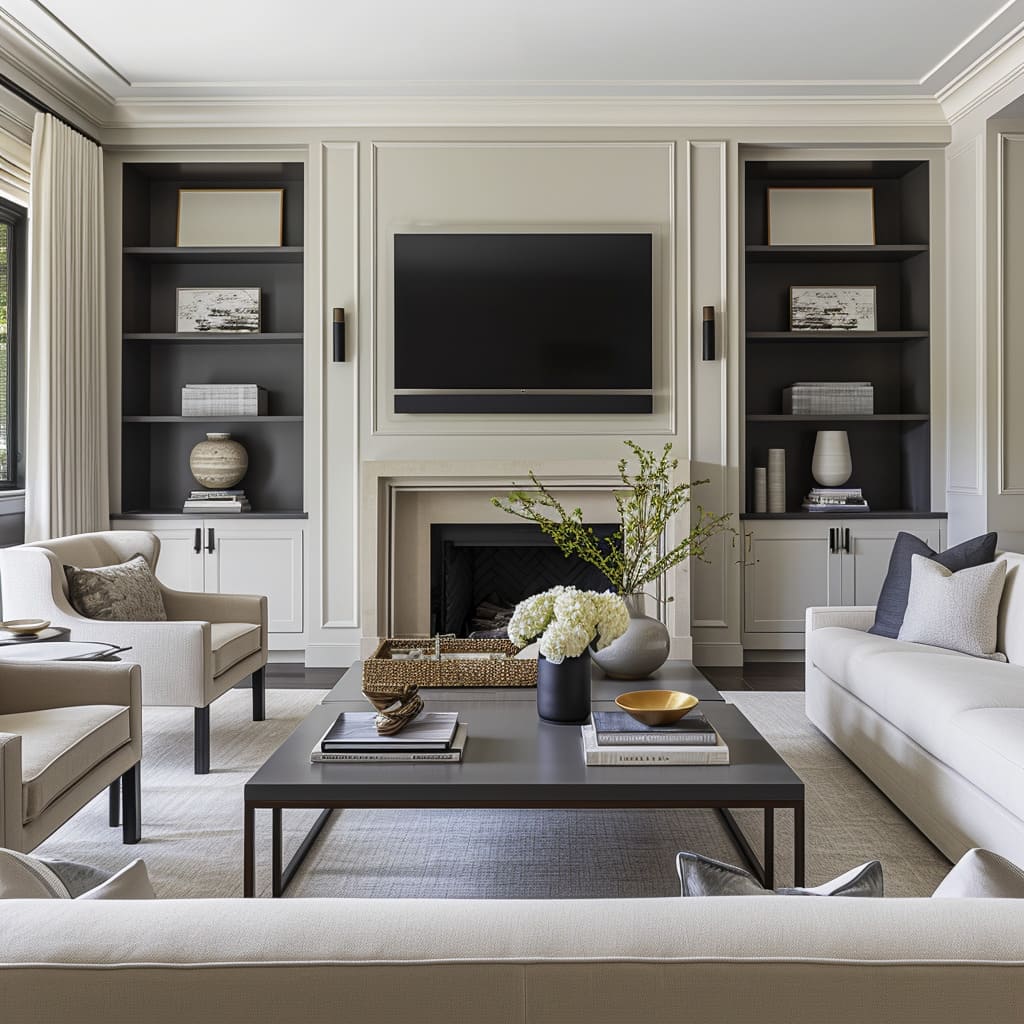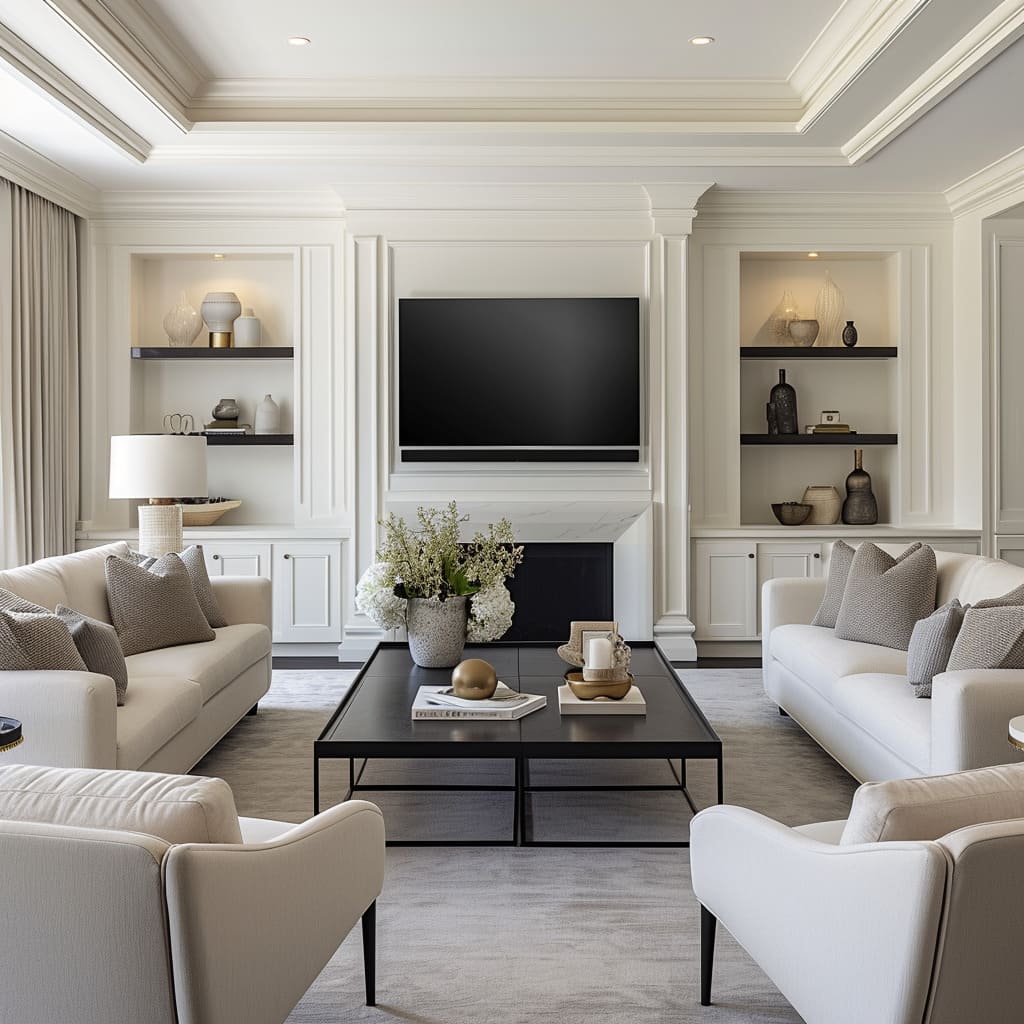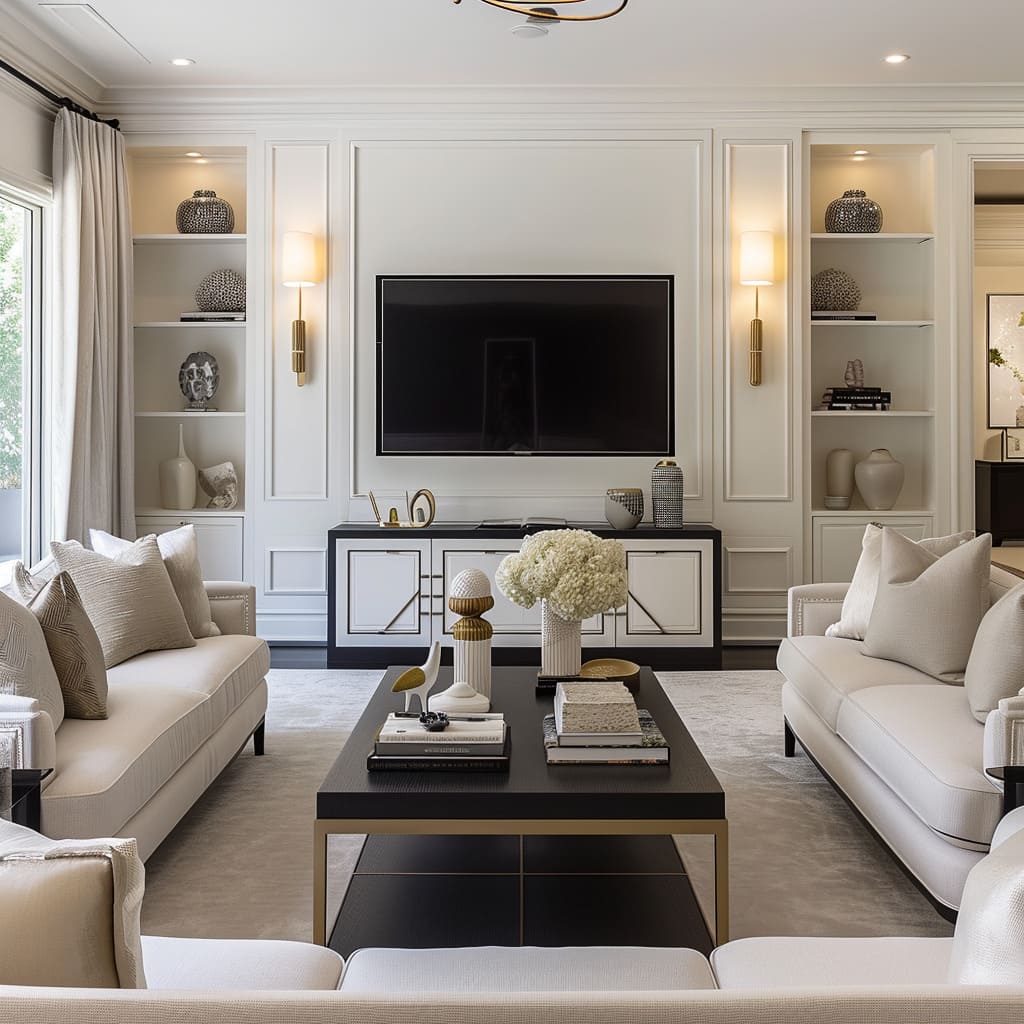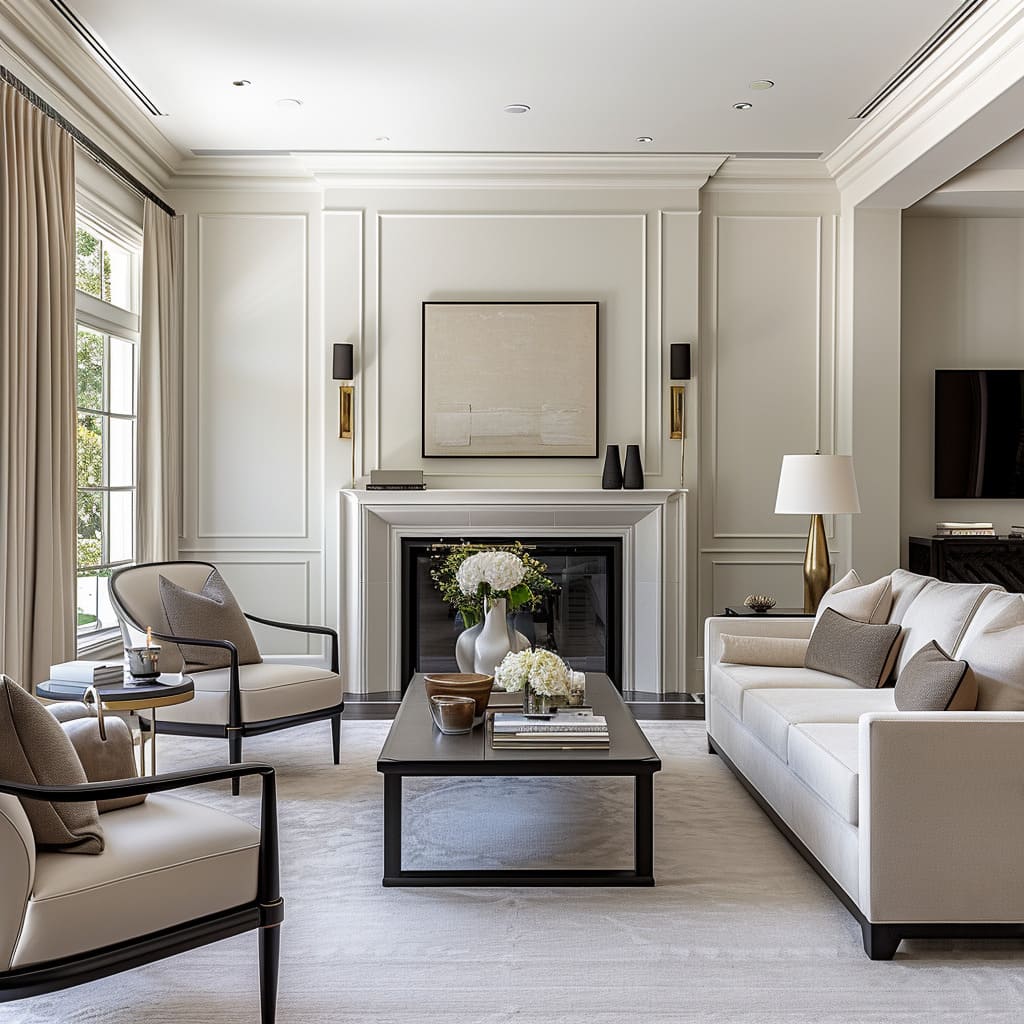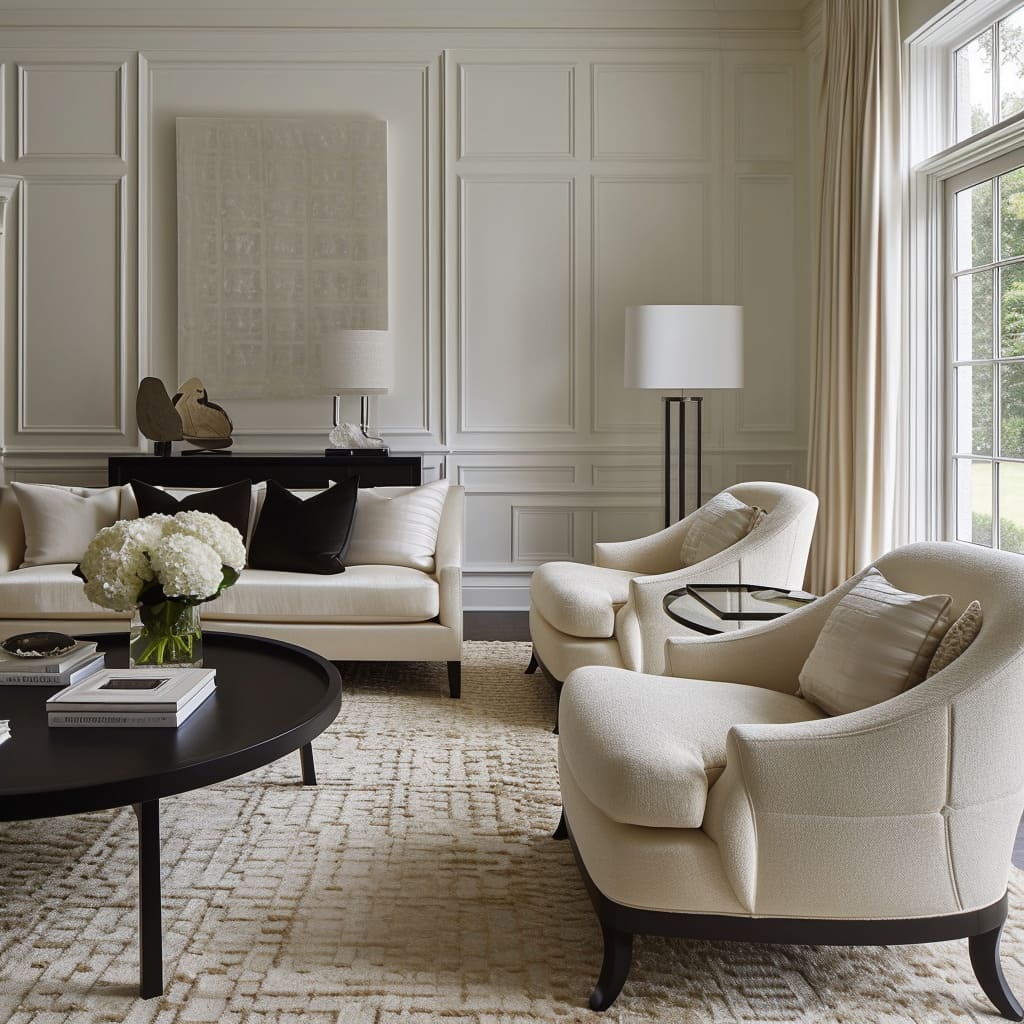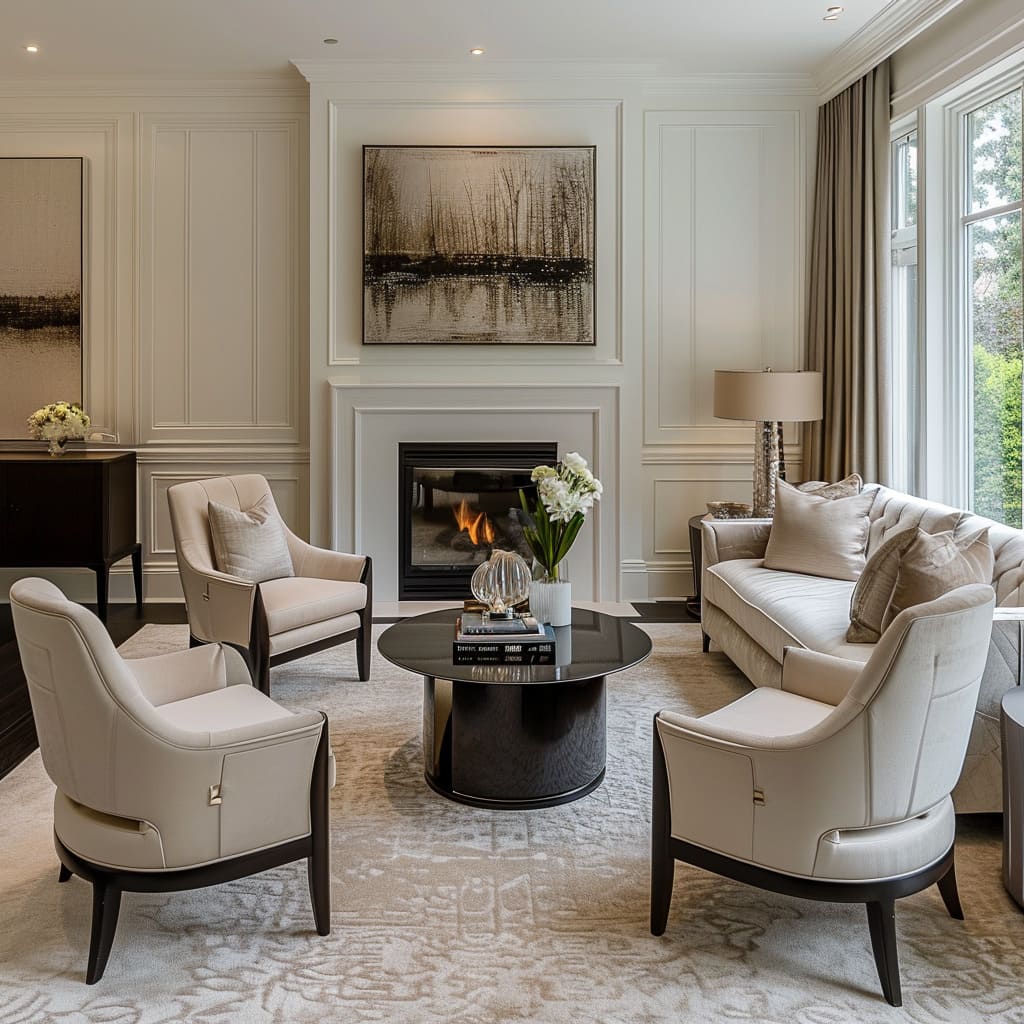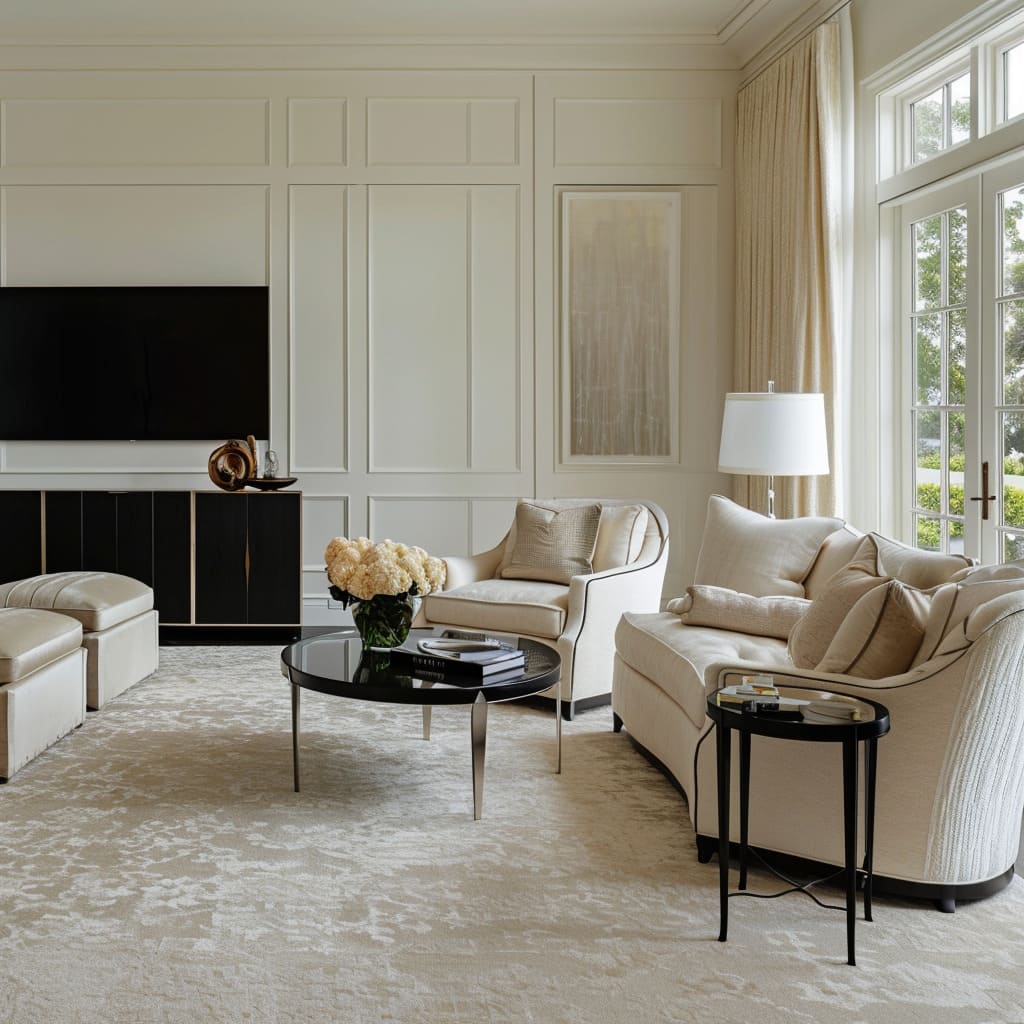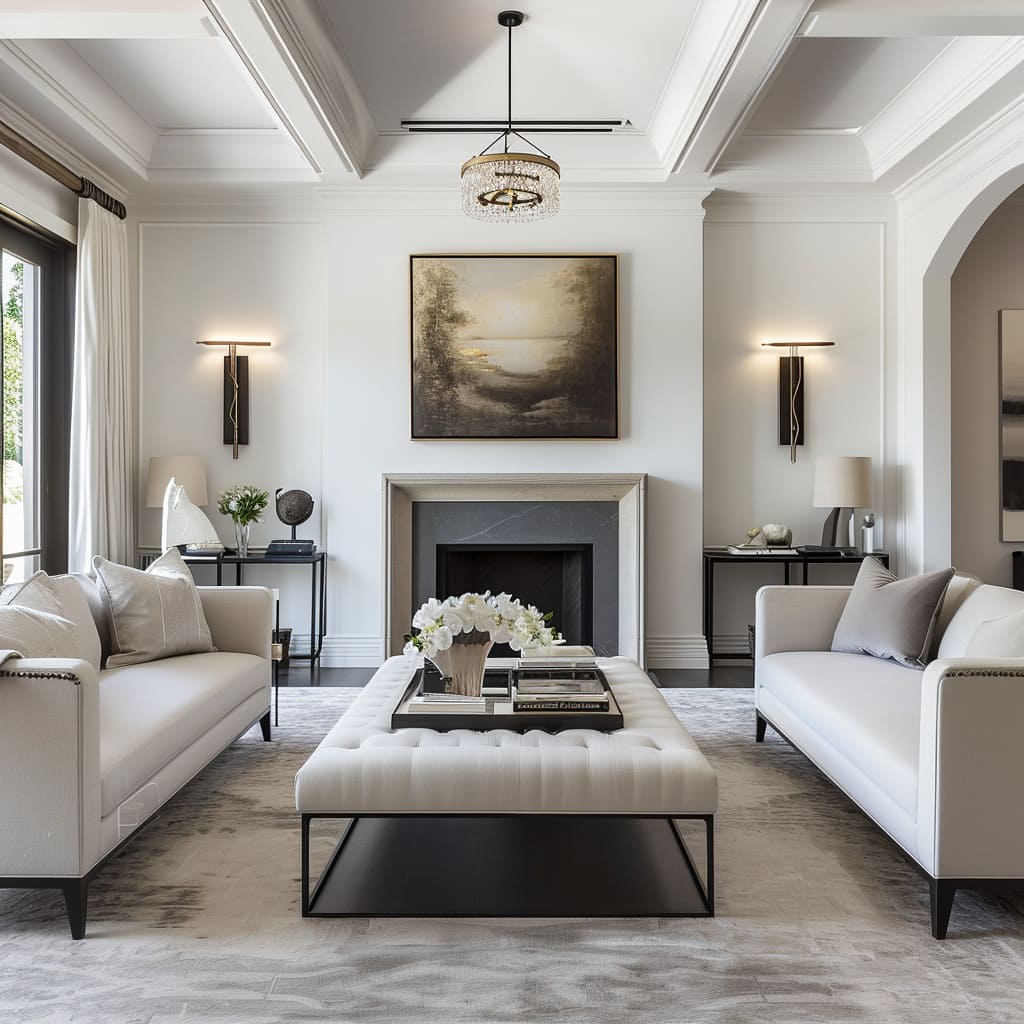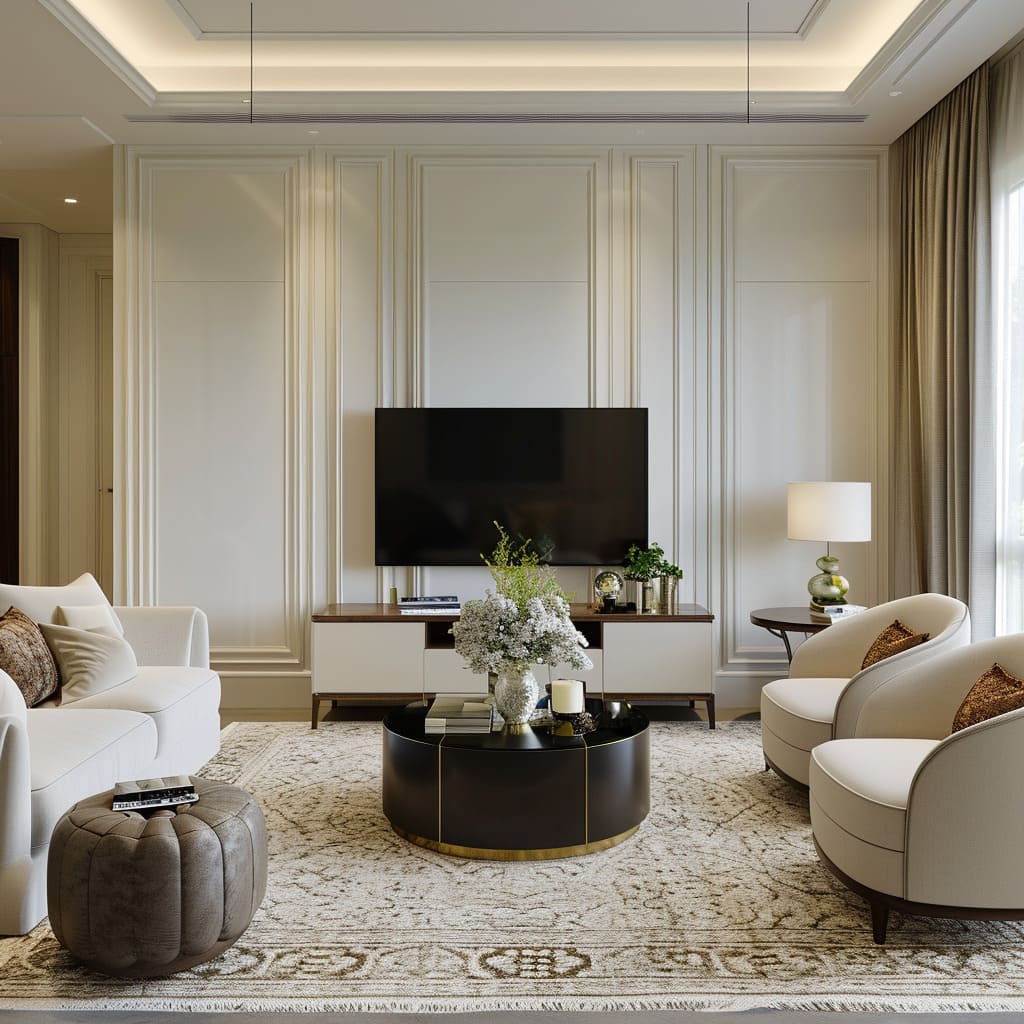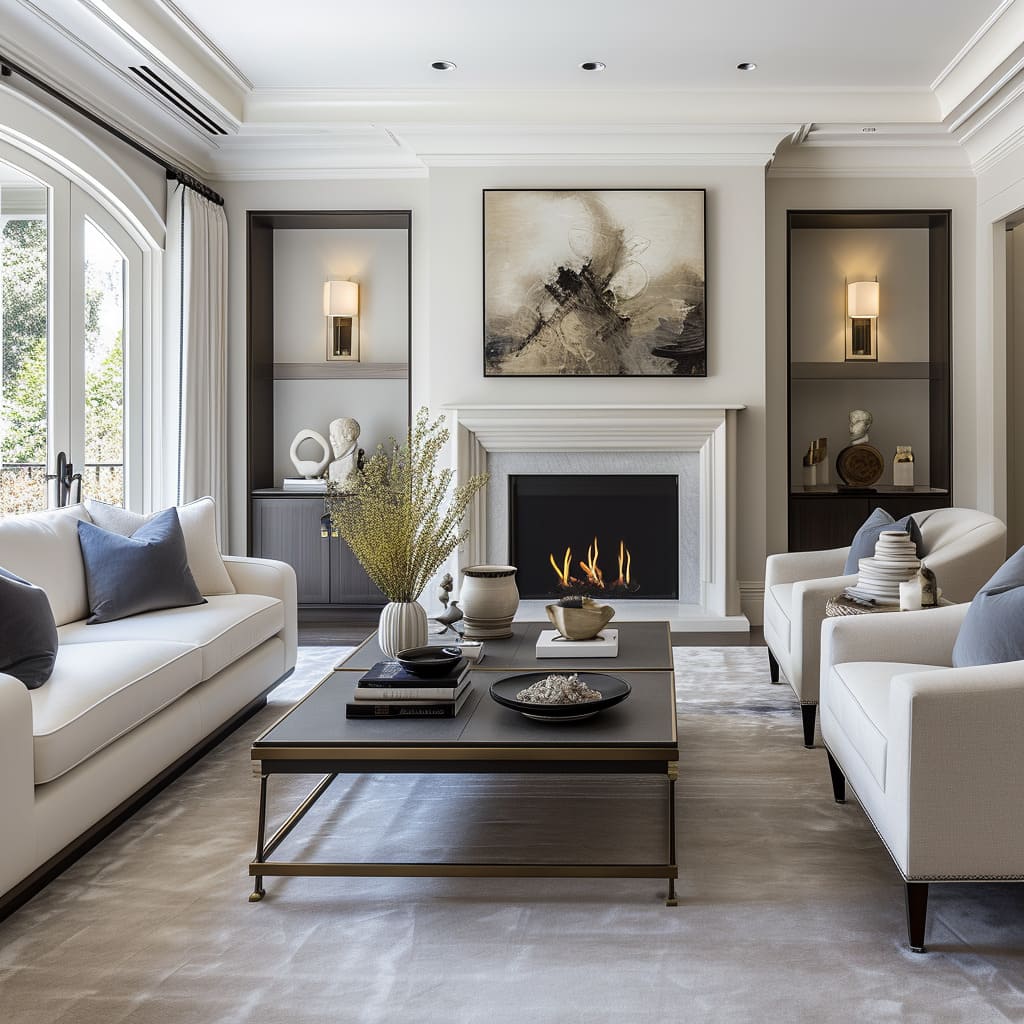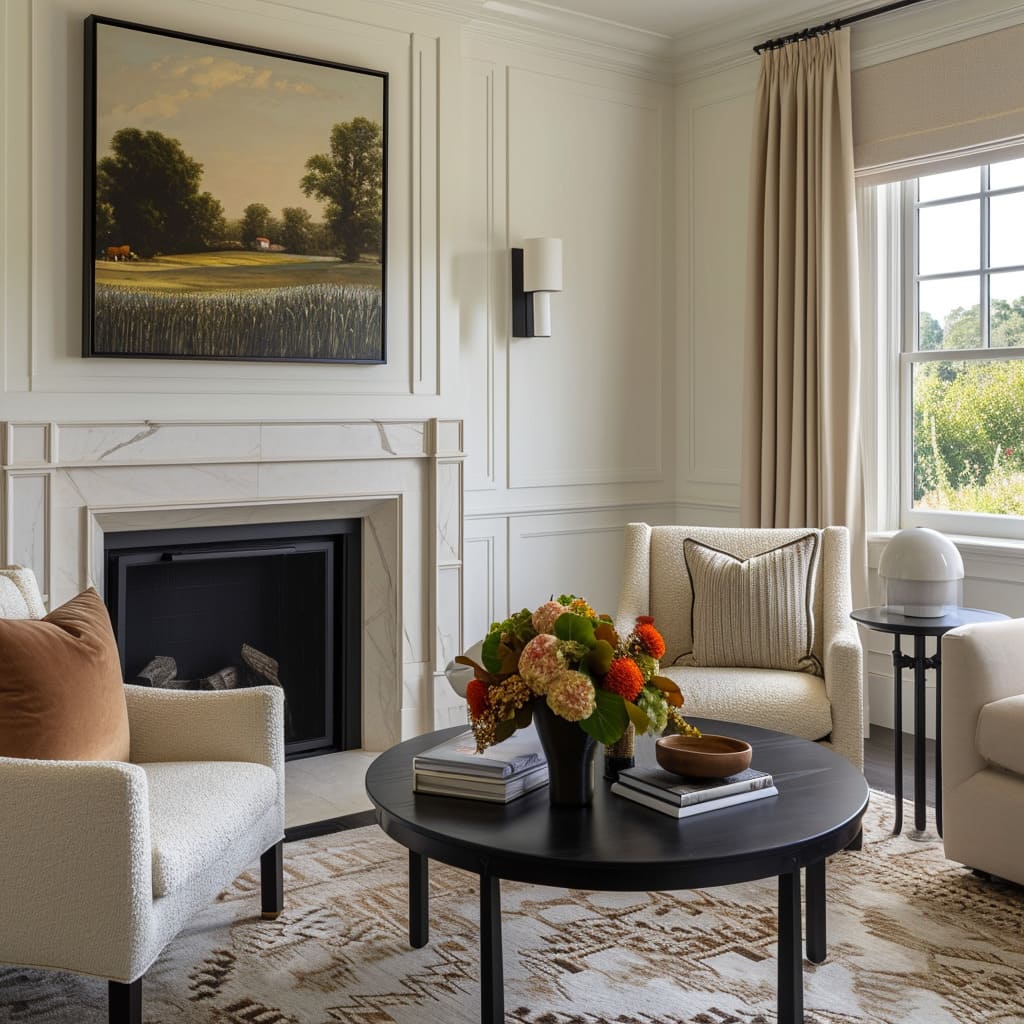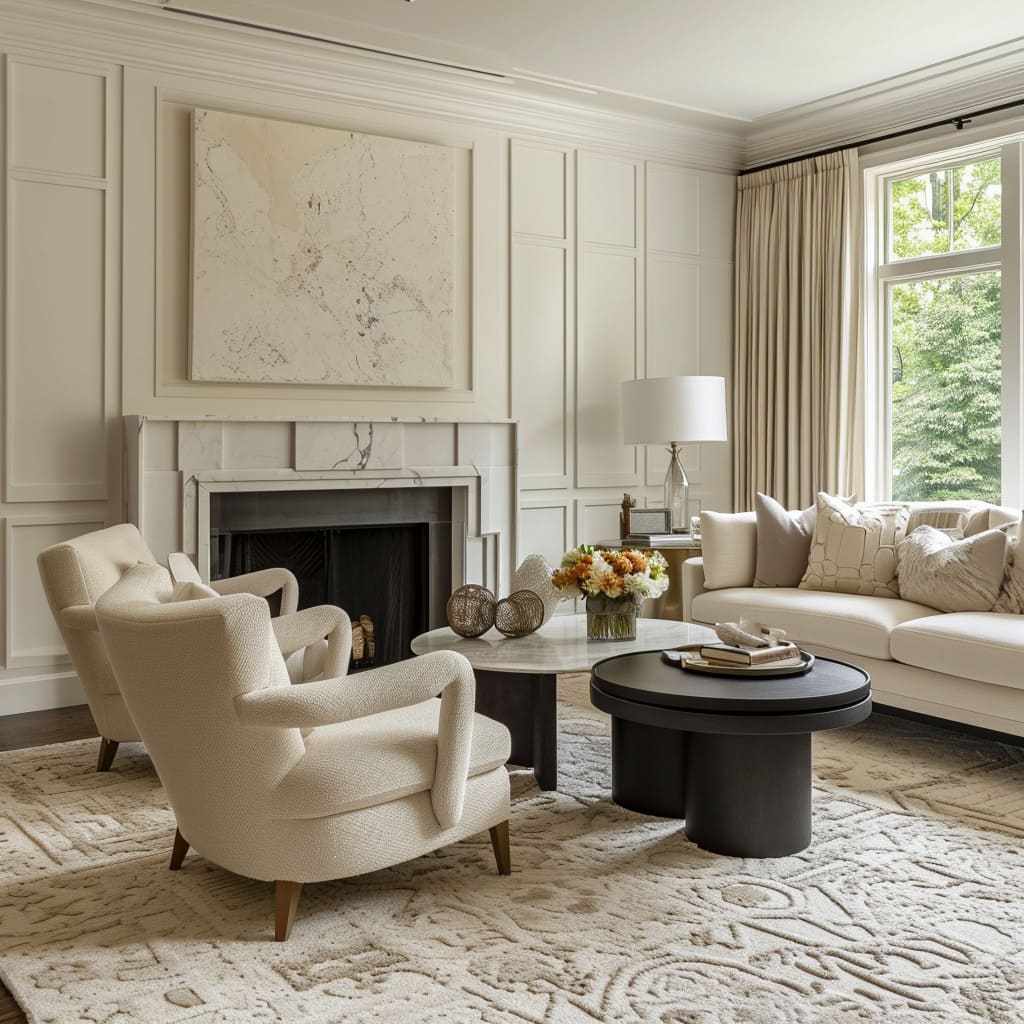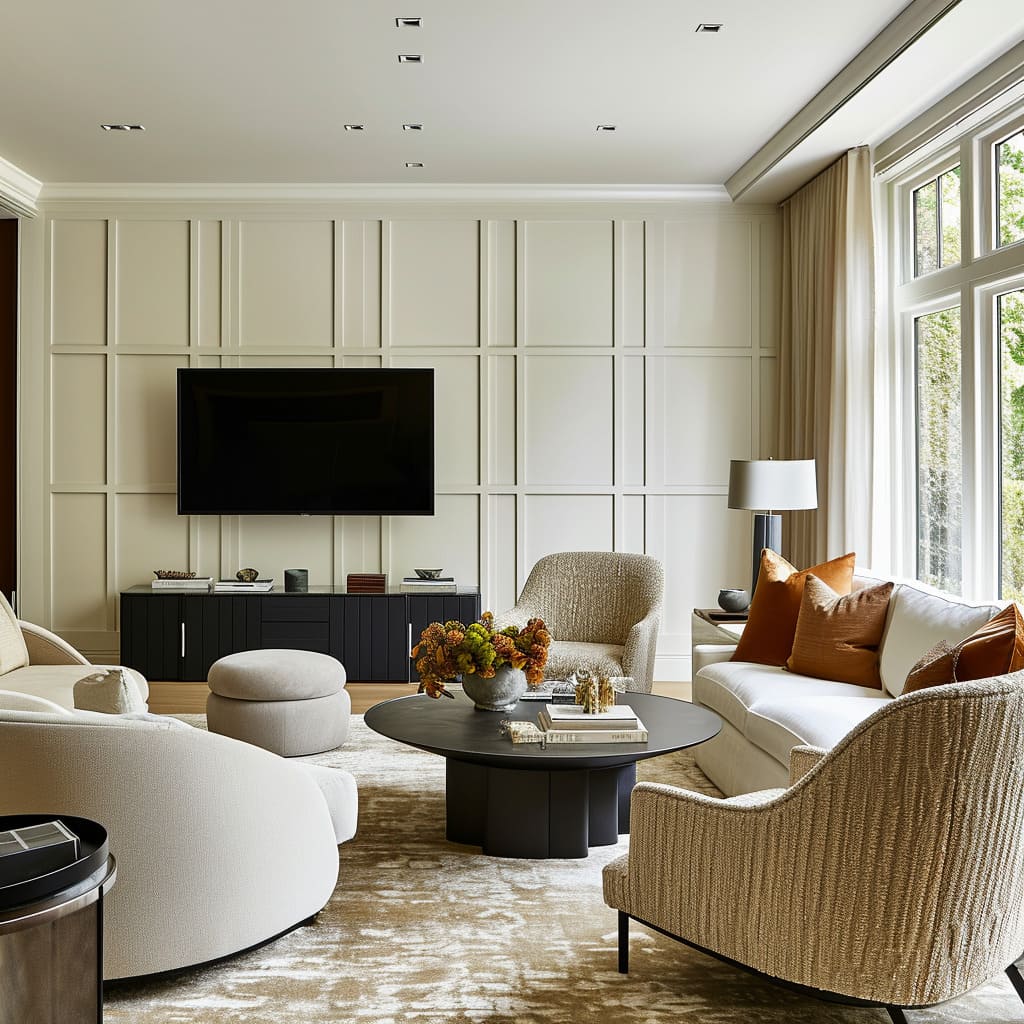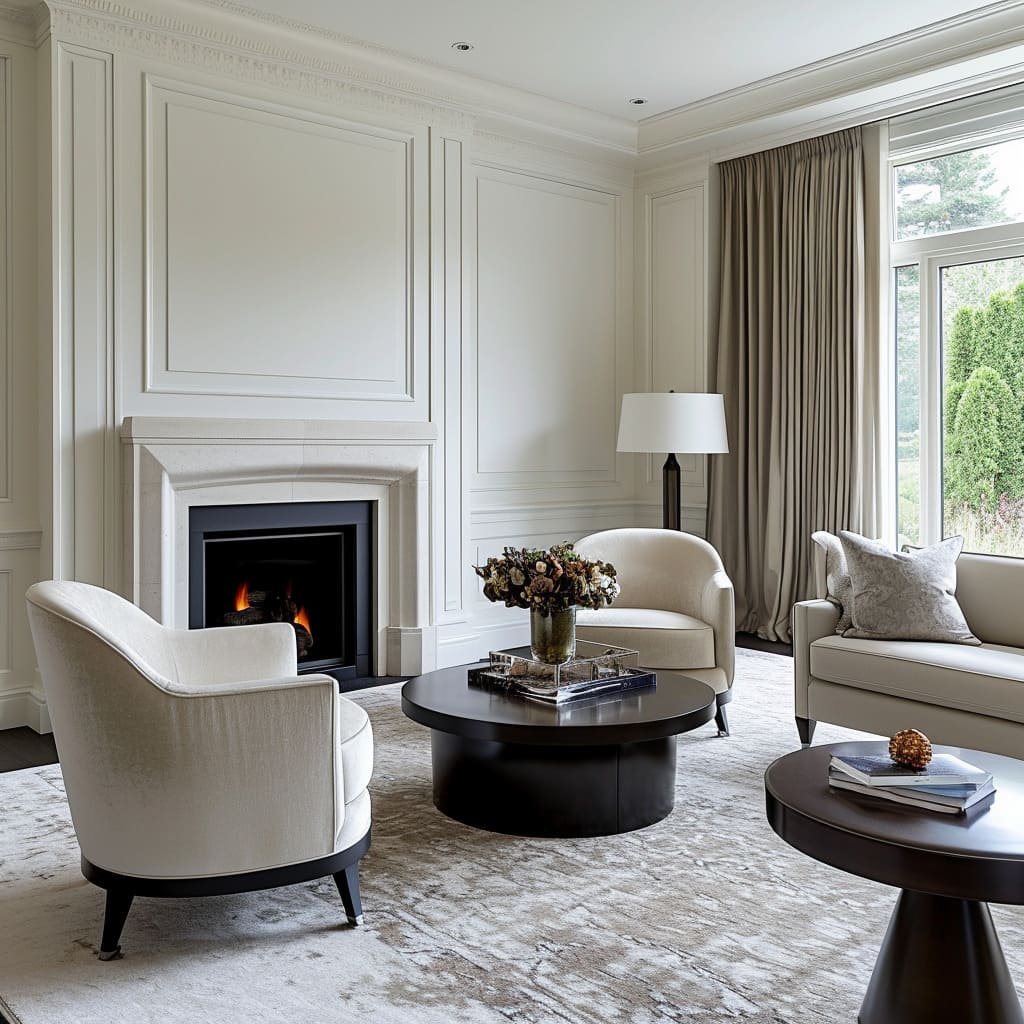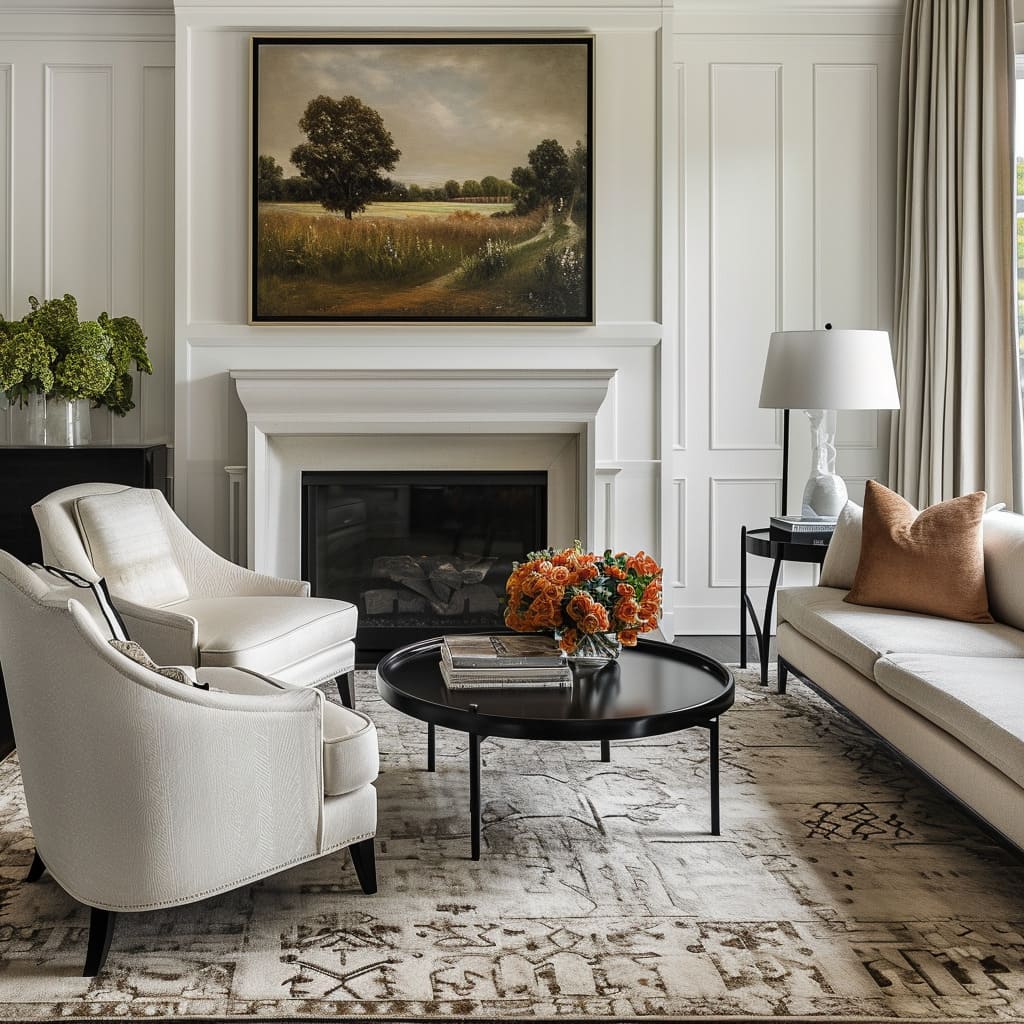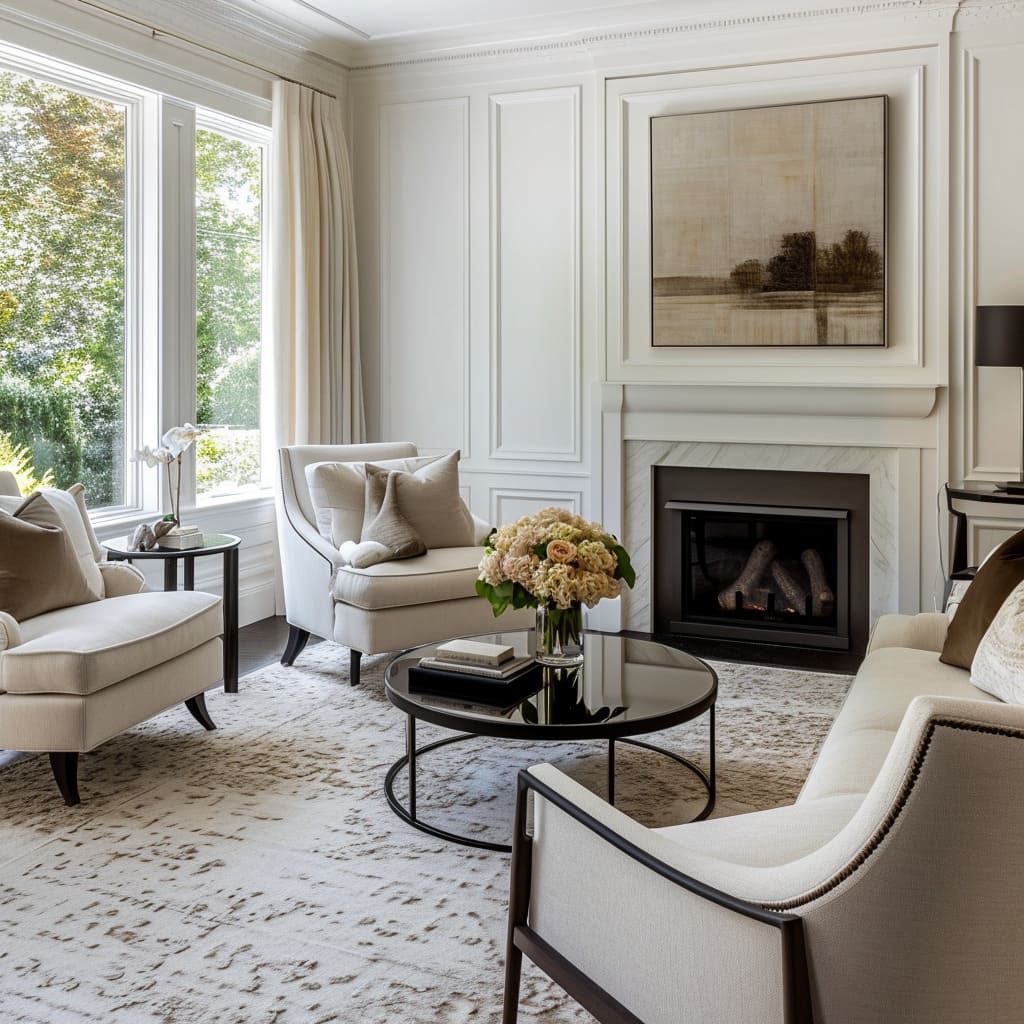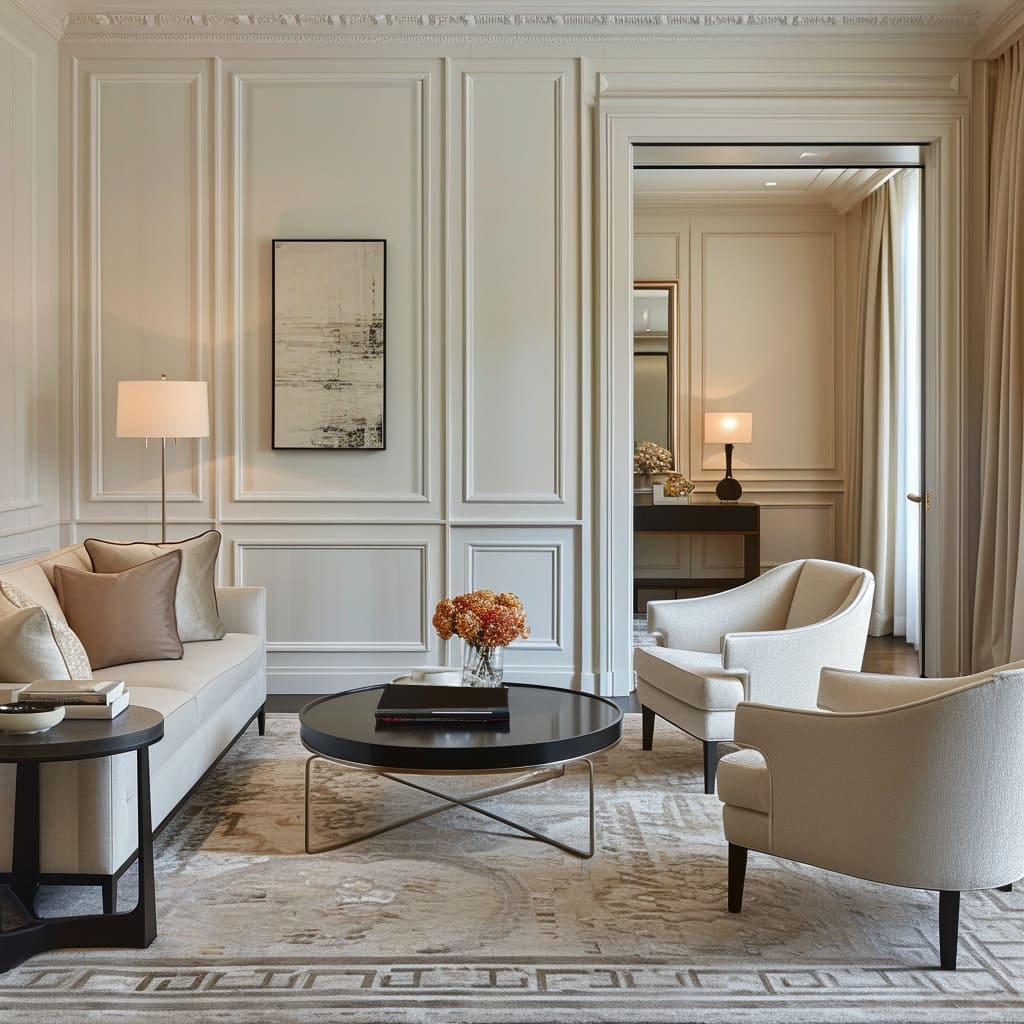In the ever-evolving tapestry of interior design, there lies a sweet spot where the echoes of history and the pulse of the modern world meet in perfect harmony. This is the realm of classic contemporary design, an aesthetic that effortlessly weaves together the rich narratives of traditional décor with the sleek minimalism of the modern age.
It is a style that pays homage to the craftsmanship and ornamentation of the past while embracing the functional simplicity and spatial freedom of contemporary living.
The allure of classic contemporary interiors lies in their ability to transcend the boundaries of time, offering spaces that are not only reflective of personal taste but also adaptable to the changing tides of design trends. In this article, we embark on a journey through the nuanced elements that define this distinctive style.
We’ll explore how neutral color palettes become the canvas for a play of textures and how the clean lines of modern furniture can complement the intricate details of classic pieces. We delve into the strategic use of lighting, which casts a glow that highlights the interplay between old and new, and the architectural elements that frame the spaces with an air of sophistication.
From the hushed elegance of plush carpeting to the enduring charm of hardwood floors, the selection of flooring plays a pivotal role in setting the stage for classic contemporary settings. Art and decorative pieces become the storytellers in these interiors, each selected not merely for aesthetic appeal but for the narrative thread it adds to the space.
The symmetry and balance achieved through carefully arranged furniture not only cater to the eye but also to the flow of daily life, ensuring that the space is as functional as it is beautiful.
As we move through the different facets of classic contemporary design, we’ll offer insights and practical advice on how to infuse your own space with this timeless aesthetic. It is a style that celebrates the blending of eras, the quality of well-crafted pieces, and the understated elegance that emerges when everything superfluous is stripped away, leaving only what is truly beautiful.
In this article, we invite you to redefine the confines of your interiors and to envision a home that is both a sanctuary of comfort and a bastion of style. This is more than a design philosophy; it is a way of living and experiencing the spaces we inhabit, where every choice is deliberate, and every detail resonates with personal significance.
Welcome to the world of classic contemporary design, where the past and present dance in timeless elegance.
The Essence of Classic Contemporary Interiors
These interior designs are excellent examples of a classic contemporary or transitional style, which is characterized by a blend of traditional and modern elements, creating a harmonious and timeless design. Here’s a detailed breakdown of the main features of this interior design style:
Color Palette
The color scheme in these interiors is typically neutral, often featuring shades of beige, grey, and off-white. This creates a calm and elegant backdrop that is both inviting and sophisticated.
Accents are generally muted, with occasional pops of color through accessories or artwork.
To realize this in your interior, consider starting with a base of neutral paint on the walls and select major furniture pieces in shades of cream or light grey. Add visual interest with colored throw pillows, vases, or artwork in restrained hues like dusty blue or sage green for a subtle yet impactful addition of color.
Furniture
The quintessence of classic contemporary furniture lies in its understated elegance and refined simplicity. Pieces are selected for their clean, uncluttered lines, with a harmonious blend of straight and subtly curved profiles that bridge the gap between traditional opulence and modern minimalism.
Sofas, the centerpiece of living spaces, embody comfort without sacrificing form, boasting generous proportions and plush cushioning, which invite relaxation. They are typically upholstered in premium fabrics like soft chenille, durable tweed, or fine leather in neutral colors that exude an air of sophistication.
Chairs, on the other hand, balance the solidity of sofas with their gentler curves, inviting varied silhouettes into the space and providing an aesthetic counterpoint that is pleasing to the eye.
The selection of wood elements in the furniture is a deliberate choice to introduce contrast and anchor the room. Dark woods such as walnut, mahogany, or ebony, offer richness and warmth, while black-painted wood provides a modern edge and a graphic punch.
The deep tones of the wood against the neutral palette of the room create a dynamic interplay of light and shadow, enhancing the furniture’s form and detail.
Incorporating these furniture choices into your space requires a thoughtful approach to balance and proportion. A sofa with a streamlined silhouette serves as a versatile foundation for your living area; its simplicity allows for layering with decorative pillows and throws to add personality and comfort.
Accent chairs with a gentle curvature break up the straight lines and bring an organic feel to the room. These can be placed strategically to create intimate conversation areas or to offer a solitary nook for reading and relaxation.
When it comes to selecting tables, whether for coffee, side, or console purposes, opting for darker wood tones adds a visual anchor to your space, lending a sense of gravity and permanence. The rich hues of the wood not only provide a visual break from the lighter tones prevalent in the room but also draw the eye, offering a stage for decorative objects, books, or lighting to stand out.
Consider tables with minimal embellishment, focusing on the beauty of the material and craftsmanship. For a cohesive look, select tables with a similar finish or material to create a sense of unity within the space.
Additionally, the formality brought by dark wood or black elements can be balanced with the softer textures and materials of the upholstery and accents. This juxtaposition creates a multi-layered interior that is both inviting and aesthetically compelling.
By choosing furniture that combines comfort with a strong design statement, your space will not only serve your practical needs but also reflect a refined aesthetic that is both timeless and distinctly modern.
Materials and Textures
A variety of materials and textures are used to add depth and interest to the spaces. This includes soft textiles like velvet or silk for cushions, smooth leather, polished wood, and reflective surfaces such as glass or metal for coffee tables or other accent pieces.
In your own home, mix and match different textures, like a velvet upholstered armchair next to a leather ottoman. Use glass or polished metal in light fixtures and furniture accents to bring a modern touch and reflect light throughout the room.
Lighting
Lighting fixtures are chosen for both function and as decorative elements. They often feature simple lines and metallic finishes, with floor lamps, table lamps, and ceiling fixtures contributing to the layered lighting essential in creating ambiance.
To achieve this lighting effect, integrate a variety of light sources at different heights and intensities. A statement chandelier or a simple pendant with a metallic finish can act as a centerpiece, while wall sconces and lamps can offer softer, more diffuse light.
Art and Decorative Pieces
Artwork tends to be abstract or modern, providing a focal point and a splash of personality. Decorative pieces are used sparingly but thoughtfully, often in pairs or symmetrical arrangements, to maintain a balanced and uncluttered look.
To adopt this in your decorating, select a few key pieces of art that speak to you and place them strategically in the room where they can draw attention but not overwhelm. When it comes to decorative items, choose quality over quantity, and consider symmetry when placing them.
Architectural Elements
The rooms exhibit classic detailing such as wainscoting, crown molding, and paneled walls, painted in neutral tones to enhance the transitional style. The use of large windows dressed with simple but elegant draperies maximizes natural light and connects the indoor with the outdoor space.
If you’re remodeling or building, consider adding these architectural details to create a sense of grandeur. For existing spaces, painting trim and molding in a crisp white can refresh a room and highlight these features.
Flooring
The foundation of any room’s design is its flooring, and in classic contemporary interiors, the preference often leans towards materials that exude warmth and sophistication. Typically, the choice is between wood and carpet, with wood being a favored option for its longevity and timeless appeal.
When selecting wood flooring, consider a medium to light finish that can help to make the space feel more expansive and inviting. Lighter wood tones have the added benefit of reflecting light, enhancing the room’s natural brightness.
For a richer ambiance, darker woods can be chosen; they offer a striking contrast to the neutral palette and can make furniture and rugs stand out.
Carpeting, on the other hand, should be in a neutral tone that complements the walls and furniture, creating a cohesive and seamless aesthetic throughout the space. It also adds a layer of comfort underfoot, essential in creating a welcoming environment.
Whether you opt for a cut-pile for plushness or a loop-pile for durability, ensure that the carpet’s texture and color align with the room’s overall design scheme.
Area rugs are a crucial element in classic contemporary interiors. They not only add warmth and texture but also help to define different zones within a larger space.
In an open-plan living area, a well-chosen area rug under the seating arrangement can anchor the living space and separate it from the dining or kitchen area. When selecting an area rug, consider the pile—shaggy rugs feel luxurious and soft, while flatweaves are more durable and easy to maintain.
The rug’s design can either be a subtle, solid color to blend with the surroundings or include a geometric or abstract pattern to introduce an element of interest and draw the eye.
For added dimension and interest, layering rugs is an advanced design tactic. This involves placing a larger, more neutral rug on the bottom with a smaller, more colorful or textured rug on top.
This technique not only defines the space but also allows you to incorporate more colors and textures into the room.
In terms of practicality, consider the room’s use when choosing flooring. For high-traffic areas, hardwood or high-durability carpets are preferable, while luxurious, softer carpets can be reserved for bedrooms or less frequented spaces.
Regardless of the material chosen, ensure it is of high quality to withstand the test of time and maintain the room’s elegant look.
Remember, the goal is to create a harmonious blend that supports the rest of your design choices, making the flooring an integral, yet subtly supportive feature of the overall aesthetic. Whether you choose the warmth of carpet or the elegance of hardwood, the right flooring can significantly impact the room’s look and feel, grounding the space and setting the stage for a beautiful, timeless interior.
Symmetry and Balance
There is a strong emphasis on symmetry and balance, with furniture often arranged in a manner that promotes conversation and comfort. Accessories and art are placed in a way that creates a harmonious visual weight across the space.
To achieve this, arrange seating to face each other to encourage interaction. Use pairs of lamps, cushions, or chairs to create symmetry.
Balance heavier pieces of furniture with lighter ones across the room.
Combination of Old and New
The interplay of eras is a defining characteristic of the classic contemporary style, achieved through a deliberate and sophisticated mix of elements from different time periods. This approach creates a layered and curated look that tells a story, adding depth and character to the home.
A well-executed combination of old and new can convey a sense of timeless elegance and enduring style.
For example, imagine the warmth of a traditional fireplace, its mantel adorned with intricate carvings and classical architectural details. Above it hangs a bold, modern abstract painting—its fluid forms and contemporary palette bringing a burst of modernity to the space.
This juxtaposition of old-world charm with avant-garde artistry creates a focal point that is both grounding and liberating.
In seating arrangements, contemporary sofas—characterized by their clean profiles and neutral fabrics—can be set against the backdrop of a grand, ornately framed mirror or paired with a coffee table that boasts a vintage patina. The clean lines of the sofas serve as a modern canvas, allowing the intricate details of the antique pieces to shine through without overwhelming the space.
To infuse this blend into your home, start by identifying which traditional pieces you can incorporate. These could be family heirlooms, antique store finds, or even architectural elements like vintage doors or reclaimed wooden beams.
Then, consider how modern decor elements, like a sleek lamp, a minimalist sculpture, or a contemporary graphic rug, can complement and contrast these traditional pieces. The key is balance—ensuring that neither style overshadows the other.
When mixing antique or traditional pieces with modern decor, consider their scale, color, and texture. An antique wooden chest can be repurposed as a statement-making sideboard in a dining room adorned with contemporary art and lighting.
Conversely, a modern metallic accent table can add an unexpected twist next to a classic wingback chair. Use color to bridge the gap between the old and new; for instance, a vintage armchair reupholstered in a modern fabric that echoes colors found in a contemporary wall art piece.
The charm of this mixed approach is in its flexibility and personalization. It allows for a gradual evolution of your interior, where pieces can be added or replaced over time without being confined to a single style.
This living, breathing design philosophy means your home can continue to grow with your tastes, experiences, and life’s changes, making it uniquely yours.
In practice, this means curating a space that feels both anchored in history and forward-thinking. It’s about creating a conversation between the past and the present, allowing each piece to contribute to a narrative that is both rich in history and vibrant with contemporary life.
This is the essence of classic contemporary style—it’s not just a design choice, but a way of bringing together the stories and aesthetics of different periods into a cohesive and beautiful home environment.
Quality Over Quantity
This style focuses on fewer, but high-quality pieces that are both functional and aesthetically pleasing. There is an evident attention to detail and craftsmanship in the furniture and accessories chosen.
Invest in well-made furniture that will last and won’t go out of style. Look for craftsmanship in joinery, upholstery, and finishes.
Each item should be both beautiful and functional, with nothing superfluous to clutter the space.
Functional Simplicity
Despite the rich layering of textures and materials, there is a sense of functional simplicity. Nothing is excessive, and each piece has a purpose, contributing to the clean and serene atmosphere.
Implement this by choosing furniture and decor that serve a practical purpose without being overly ornate. Storage should be discreet and integrated, such as built-ins or furniture with hidden compartments.
This keeps the space tidy and calm, highlighting the design rather than the items within it.
Summary: Crafting Elegance in Classic Contemporary Design
In conclusion, classic contemporary interiors represent a seamless blend of the comfortable familiarity of traditional design with the crisp efficiency of modern aesthetics. This style is not just about creating a visually pleasing space but also about forging a personal connection with the environment, where each element has its place and purpose.
By thoughtfully combining the old with the new, one can curate a living space that resonates with a sense of history while embracing the present.
It’s a testament to the timeless nature of good design that these interiors feel both current and enduringly stylish. Whether through the strategic placement of furniture, the careful selection of color palettes, or the intentional mix of materials and textures, classic contemporary design offers a versatile framework for expressing individual style.
It’s where elegance meets comfort, and history meets innovation, resulting in homes that are not only aesthetically balanced but also rich in narrative—a true reflection of the lives lived within their walls.


